1. Sears Christmas Wish Book
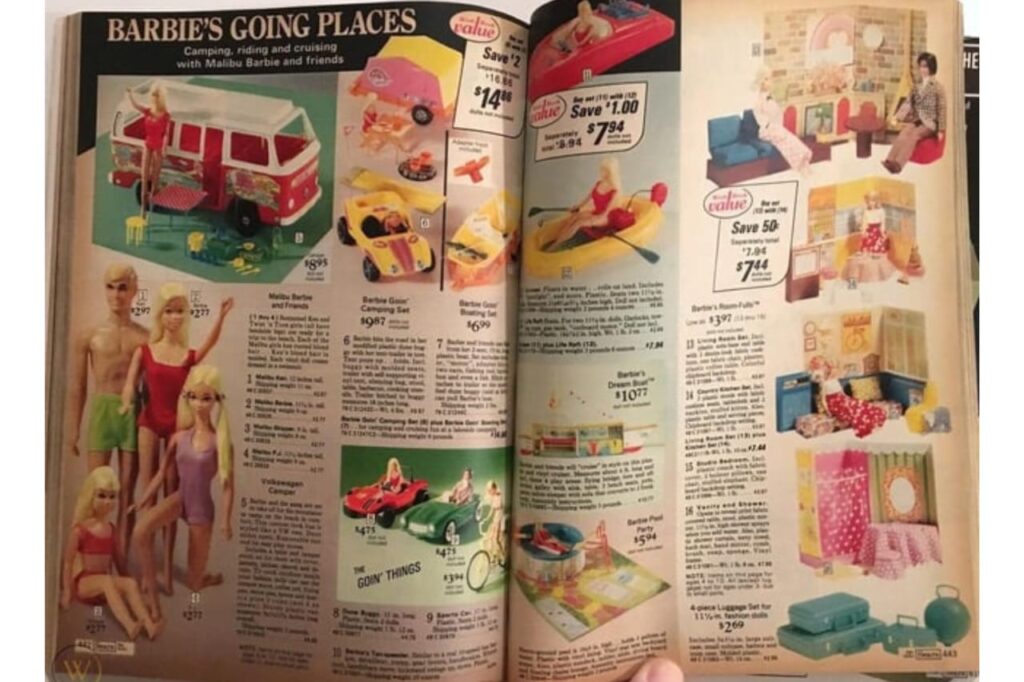
Growing up in the 1970s meant living in a world that felt simpler yet filled with its own kind of magic. From quirky household items to cultural icons that shaped childhood memories, these little details are instantly recognizable to anyone who came of age in that decade. Here are some of the unforgettable things that defined life back then.
The arrival of the Sears Christmas Wish Book was a highlight of the holiday season. Each fall, this massive catalog landed in mailboxes, filled with toys, clothes, and gadgets that seemed to stretch on forever. Children pored over its glossy pages, circling their most-wanted items and dreaming of what might appear under the tree. From Barbie playsets to Star Wars action figures, the Wish Book showcased everything a kid could imagine. It wasn’t just about shopping; it was about building anticipation and excitement. Families often kept the catalog on the coffee table for weeks, making it a shared holiday ritual that brought generations together.
2. Tang in the cupboard

If you opened a kitchen cupboard in the 1970s, chances are you’d find a bright orange canister of Tang. Marketed as the powdered drink mix astronauts used during NASA’s Gemini missions, Tang became a household staple thanks to its space-age connection. Kids mixed it with water for a citrusy boost, and parents liked its convenience. While astronauts only used it a handful of times, the association was powerful enough to make Tang feel futuristic. Families kept it handy for quick breakfasts or after-school drinks, and the orange powder even became part of lunchbox lore. To this day, many people who grew up in the ’70s can still recall the taste that promised a little piece of outer space.
3. Sitting on shag carpeting
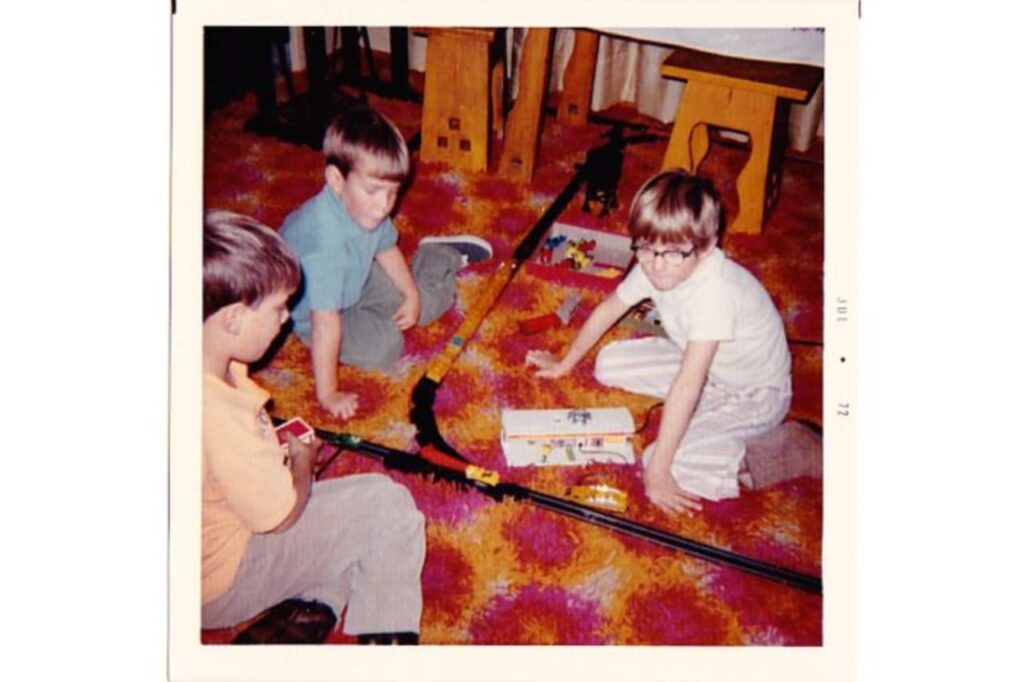
Step into a 1970s living room, and the floor was often covered in thick, colorful shag carpeting. Popular shades included avocado green, burnt orange, and gold, giving homes a distinctly groovy vibe. The long fibers made it soft and fun to sprawl out on, whether you were watching TV, playing board games, or listening to records. But shag carpeting also had a downside, it trapped everything from crumbs to toys, making vacuuming a constant challenge. Many families remember the feel of sitting cross-legged on shag, surrounded by wood-paneled walls and bold furniture. It was more than flooring; it was part of the cozy, slightly wild aesthetic of the time.
4. Phones with cords
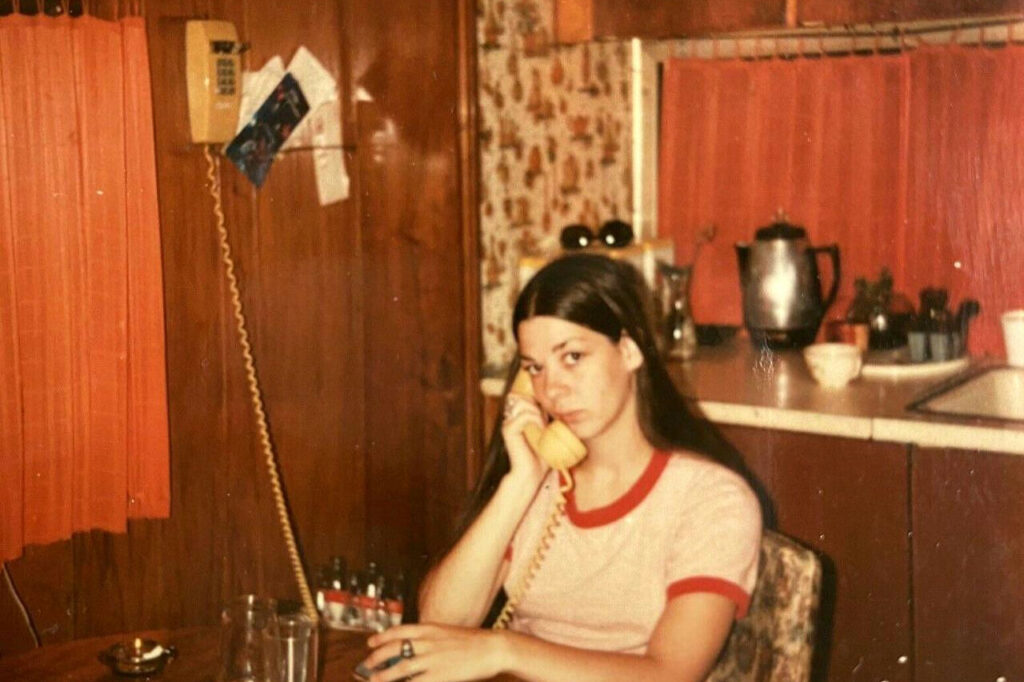
Before cordless phones or cellphones, every call in the 1970s came with a cord, and sometimes those cords were stretched to extreme lengths. Many families installed extra-long coiled cords so conversations could be carried from the kitchen to the living room or even down the hall. Siblings often tangled themselves in knots trying to sneak private chats, and parents sometimes yanked the cord to remind you to wrap it up. The curly wires stretched out and twisted over time, leaving a permanent reminder of hours spent talking. For kids growing up then, wrapping the cord around a finger while chatting with friends was practically a ritual.
5. Watching Schoolhouse Rock! between cartoons and learning more from it than in class

Saturday mornings weren’t just for cartoons, Schoolhouse Rock! aired between shows and taught lessons through catchy songs and animated shorts. Covering everything from grammar and math to civics and history, the series made learning memorable. Classics like “I’m Just a Bill” and “Conjunction Junction” turned classroom material into songs kids could hum for life. The segments were short, entertaining, and so cleverly written that children often remembered more from a few minutes of Schoolhouse Rock! than from hours in school. Teachers sometimes even used them as classroom aids. For 1970s kids, the blend of cartoons and education didn’t feel forced, it was fun, and it stuck.
6. TV test patterns

In the 1970s, television wasn’t a 24-hour stream of programming. When stations signed off for the night, they often displayed colorful test patterns, usually a circular design with stripes of red, green, blue, and other shades. Accompanied by a steady tone or complete silence, these patterns were the last thing many kids saw before heading to bed. They signaled the end of cartoons, sitcoms, and late-night movies, reminding viewers that television had limits. Some people still recall the slight eeriness of waking up early and seeing nothing but a static test card staring back. Today, with nonstop streaming, it’s almost hard to imagine a time when TV actually went to sleep.
7. That one friend with a Pong console being the most popular kid on the block
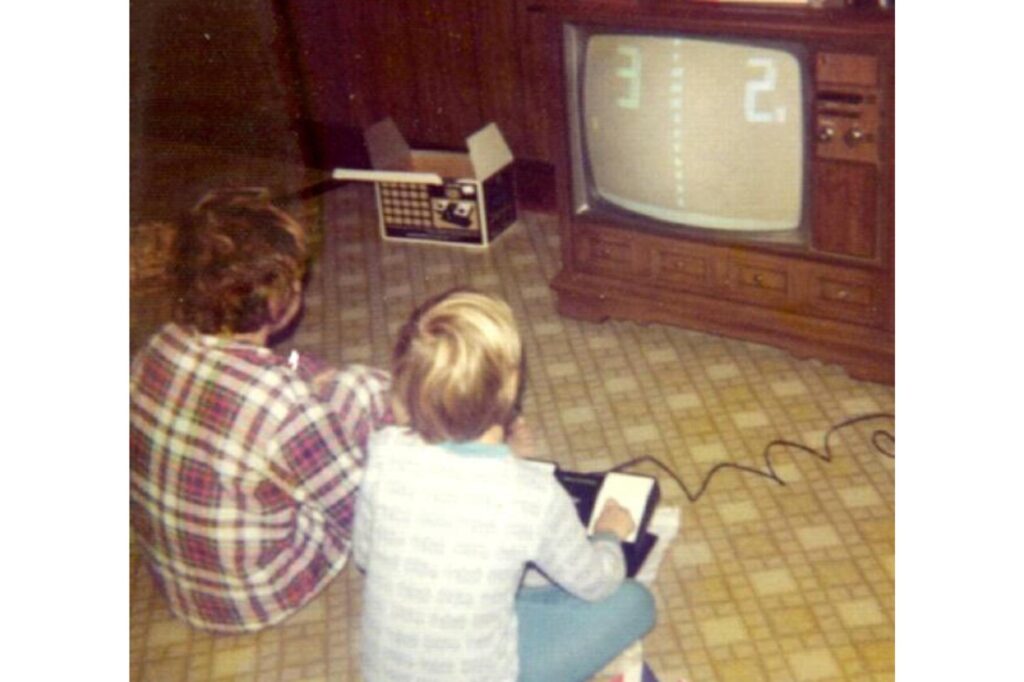
When Atari released Pong in 1972, it brought the first widely successful home video game into American living rooms. The game was simple, two paddles, a bouncing dot, but for kids used to board games or outdoor play, it felt revolutionary. Not everyone could afford a console, so the few households that had one quickly became neighborhood hangouts. Friends gathered to take turns, argue over high scores, and marvel at the novelty of controlling something on a TV screen. Pong’s success marked the start of home gaming culture, paving the way for later consoles and arcades. For 1970s kids, though, it was simply magic, and that lucky friend with a Pong set instantly had the most popular house on the block.
8. Brown and orange everywhere
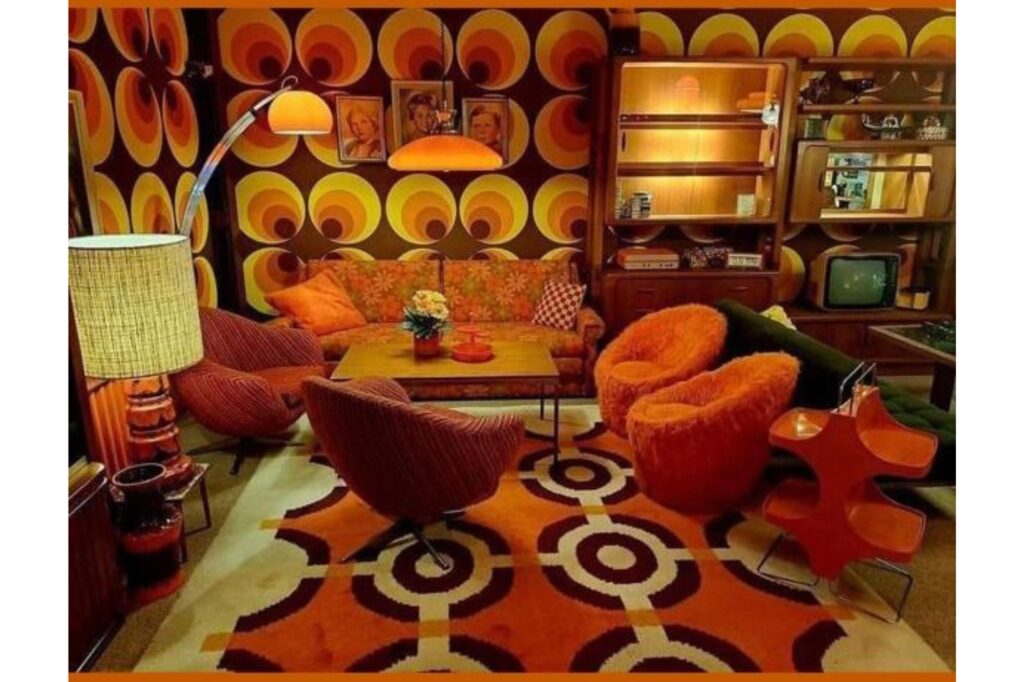
The 1970s had a distinctive color palette, and brown and orange were everywhere. From living room couches to kitchen appliances, these earthy tones were considered stylish and coordinated. Families might have an avocado-green fridge, an orange countertop blender, and brown floral curtains all in the same room. Clothing followed the same theme, with striped orange-and-brown shirts or rust-colored dresses showing up in school pictures. It gave the decade a recognizable look, instantly setting it apart from the bright pastels of the ’50s or the mod shades of the ’60s. While tastes have changed, those colors remain one of the most iconic design hallmarks of the era.
9. Riding in station wagons
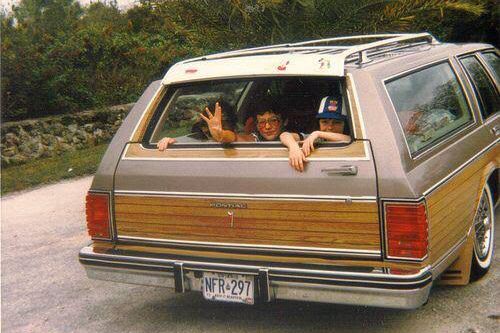
Before car seats were widely enforced and safety laws tightened, kids in the ’70s often piled into the back of station wagons without seatbelts. The roomy back area, with its fold-down seats or open cargo space, became a playground on wheels. Children sat facing backward, played games, or sprawled out during long road trips. Parents enjoyed the extra space for luggage, while kids loved the sense of freedom. It was a time when cars weren’t just transportation but part of family adventures. Looking back, it’s surprising how normal it felt to ride untethered, with only the hum of the road and the chatter of siblings for company.
10. Casey Kasem’s American Top 40
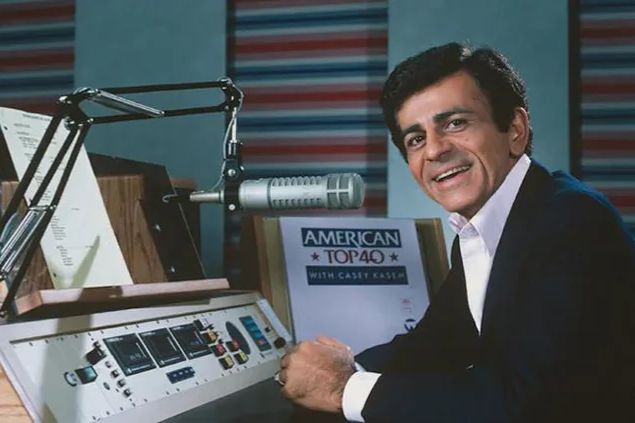
Radio was a lifeline for music lovers in the 1970s, and Casey Kasem’s American Top 40 countdown became a weekly tradition. Every weekend, fans tuned in to hear the latest hits, complete with Kasem’s smooth voice and signature storytelling. He read fan letters, shared trivia about artists, and built suspense as he worked toward the number one song. For kids and teens, it was a way to stay connected to the pulse of pop culture, jotting down favorites or recording songs on cassette tapes. Kasem turned the radio into a shared experience, bringing families and friends together around the hits of the week.
11. Pet rocks
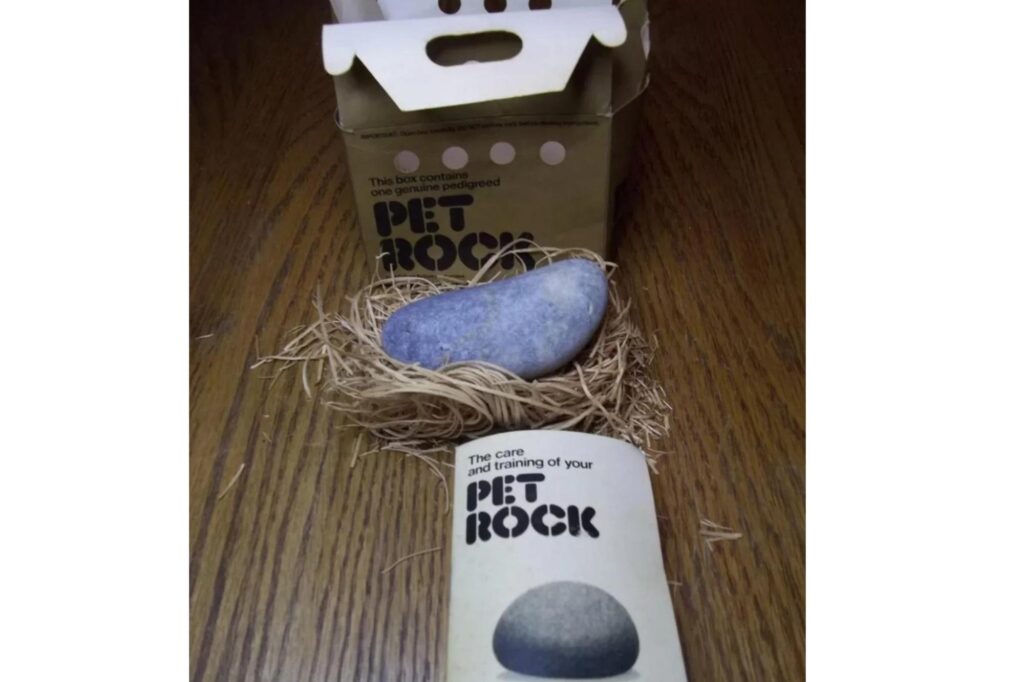
In 1975, one of the strangest fads of the decade swept the country: the Pet Rock. Created by advertising executive Gary Dahl, it was literally a smooth rock packaged in a small cardboard box with air holes and a humorous instruction manual. Marketed as the “perfect pet” because it required no feeding, walking, or cleaning, it quickly became a cultural sensation. Millions of these quirky novelties were sold, making Dahl a millionaire almost overnight. Kids proudly carried their Pet Rocks to school, while adults gave them as gag gifts. Although the craze faded within months, it perfectly captured the playful, sometimes bizarre spirit of the 1970s.
12. Filmstrips at school
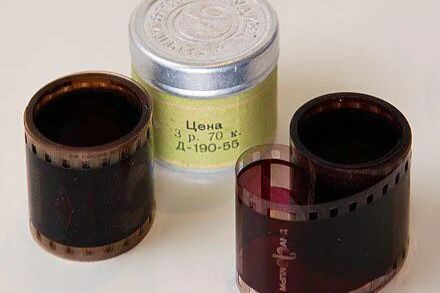
Classrooms in the 1970s often relied on filmstrips for lessons, and every student remembers the familiar click as the reel advanced from one frame to the next. Teachers sometimes paired them with a cassette or record that beeped to signal when to change the slide. But technical hiccups were common, the filmstrip jammed, the audio skipped, or the picture went out of focus. Still, there was something exciting about dimming the lights and learning from the images on screen. For many students, these simple presentations were a break from textbooks, turning an ordinary lesson into a mini-event.
13. Corduroy pants
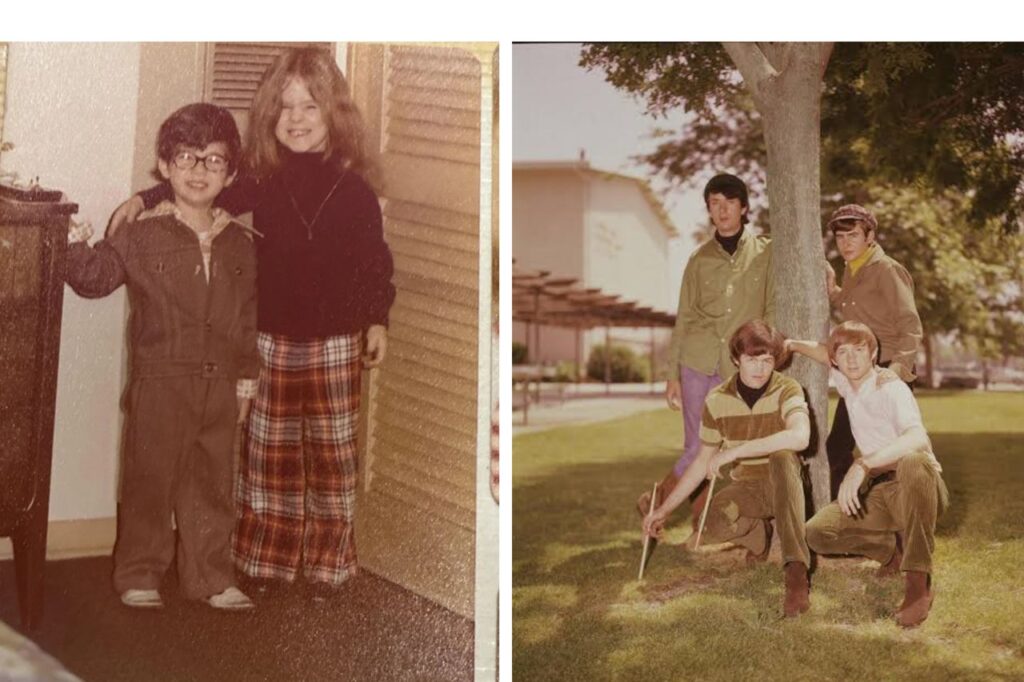
Corduroy was one of the most popular fabrics of the ’70s, especially for kids’ pants. Recognizable by its ribbed texture, corduroy had a unique sound: a whoosh-whoosh as you walked. It came in a rainbow of colors, from earthy browns and tans to bold shades like red, green, or mustard. While some children found the fabric stiff or itchy, it was durable and warm, making it a practical choice for school clothes. Family photos from the decade often feature siblings lined up in their corduroys, looking both fashionable and slightly uncomfortable. Today, hearing that swishing sound instantly takes many people back to their school days.
14. Polyester leisure suits

The polyester leisure suit became a true symbol of 1970s style. Typically featuring wide lapels, bold colors, and a slightly shiny finish, these suits were worn to parties, discos, and even casual gatherings. They were marketed as versatile, easy-care fashion, no ironing needed, which made them appealing to men and women alike. While they were trendy at the time, the fabric often felt scratchy against the skin, and its lack of breathability made it uncomfortable in warm weather. Still, paired with platform shoes and open-collared shirts, the leisure suit epitomized the bold, flashy look of the disco era.
15. Waiting for weekly TV
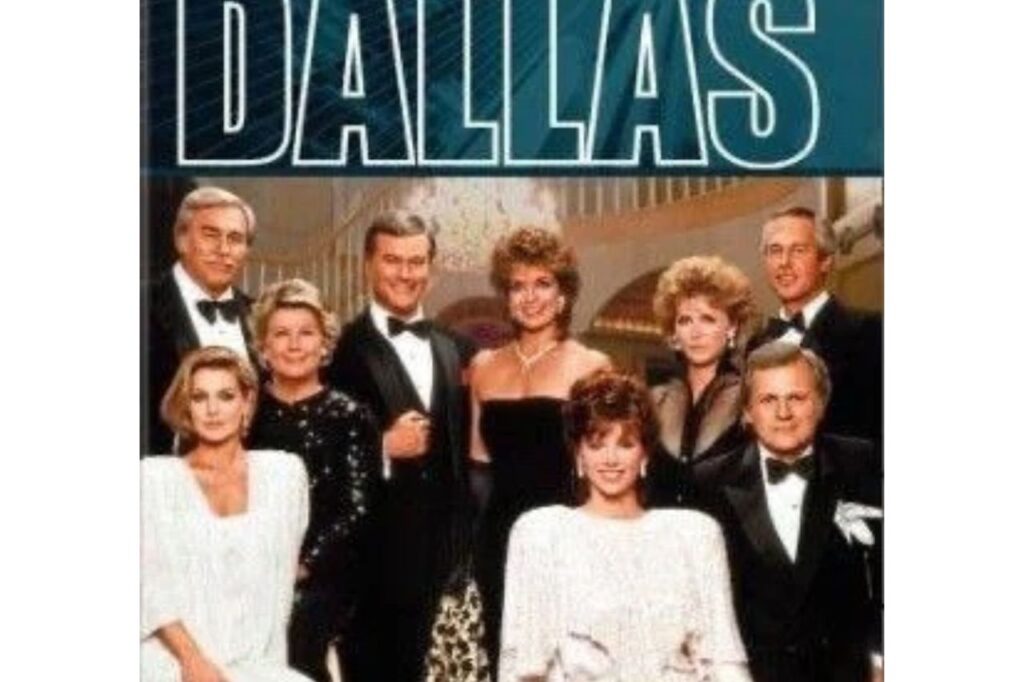
In the 1970s, television shows aired once a week, and if you missed an episode, you simply had to wait for a rerun, sometimes months later. That meant a whole week of anticipation for the next chapter of a favorite sitcom, drama, or adventure series. Families gathered around the TV at the same time every night, turning it into a ritual. Popular shows like Happy Days, MASH*, and Charlie’s Angels created an appointment viewing, where everyone tuned in together. Unlike today’s binge-watching, this slower pace built suspense and gave kids something to look forward to all week long.
16. Waving Polaroids
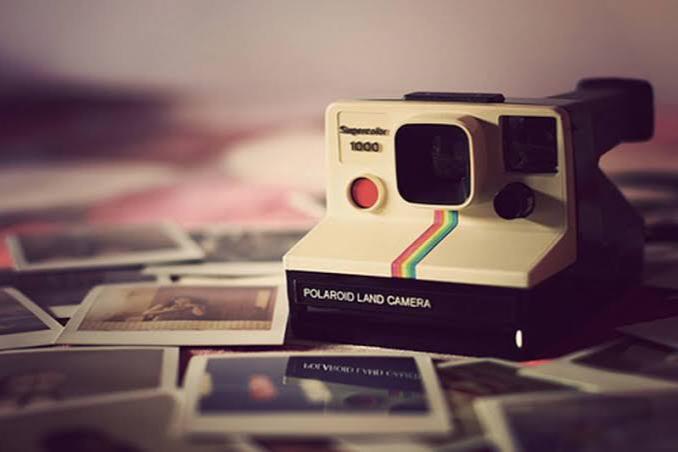
Instant photography felt like magic in the 1970s, thanks to Polaroid cameras. With one click, the camera spit out a square photo that developed before your eyes. Kids and adults alike impatiently waved the print in the air, convinced it would speed up the process, even though it didn’t. Polaroids were perfect for family gatherings, birthdays, and vacations because they provided immediate keepsakes. Friends often wrote notes on the white borders, turning photos into personal mementos. While traditional film required waiting for the drugstore to develop rolls, Polaroids captured the moment instantly, and for many families, that was priceless.
17. Mimeograph paper smell
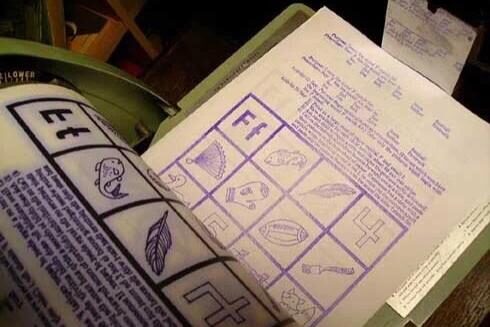
Long before photocopiers became common in schools, teachers relied on mimeograph machines to make copies. These devices used a special purple ink that gave freshly printed handouts a distinct chemical smell. Kids often couldn’t resist taking a deep sniff of new worksheets, even if they didn’t fully understand why the scent was so appealing. The slightly damp, cool feel of the pages made them easy to recognize, too. For students in the ’70s, that smell signaled everything from math quizzes to permission slips. It became such a shared experience that the aroma itself now sparks instant nostalgia.
18. Lava lamps

Few items captured the groovy aesthetic of the 1970s like the lava lamp. With its hypnotic blobs of wax rising and falling in a liquid-filled glass bottle, the lamp doubled as both décor and entertainment. Teens proudly displayed them in their bedrooms, and adults often placed them in living rooms as conversation pieces. The soft glow created a relaxing vibe, especially when paired with music or just daydreaming. Watching the shapes slowly shift could occupy kids for hours, making the lava lamp as much an experience as an object. It symbolized the laid-back, free-spirited style of the decade.
19. Metal lunch boxes
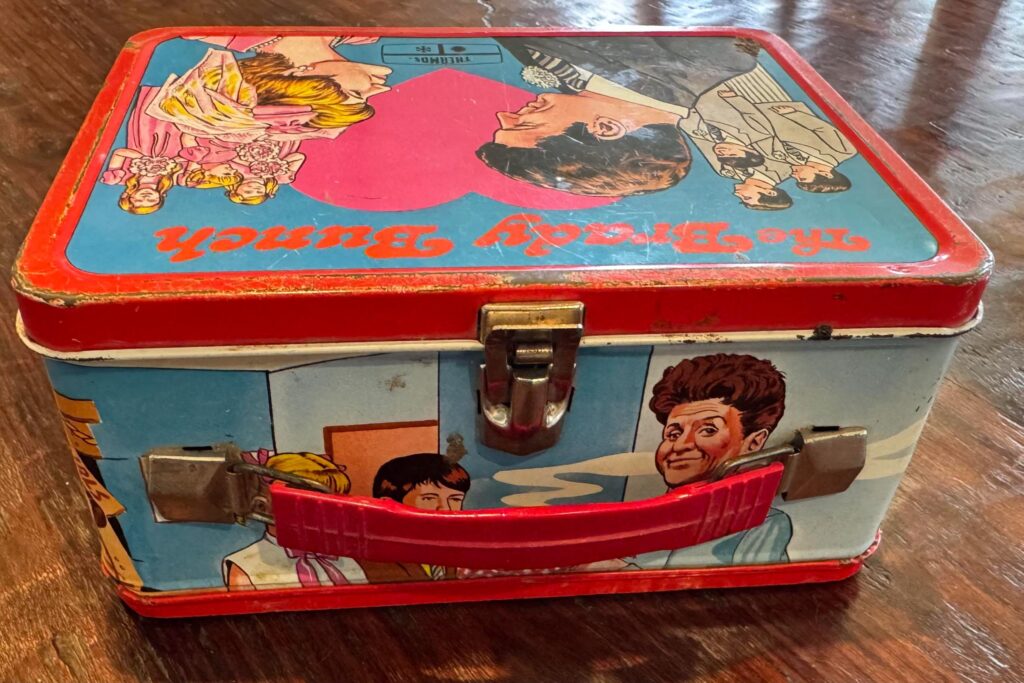
Before plastic became the norm, kids in the 1970s carried metal lunch boxes to school. These sturdy boxes came with colorful designs featuring everything from Star Wars and The Brady Bunch to superheroes and cartoons. Each one had a matching thermos tucked inside, often decorated with the same characters. The thermoses rarely kept liquids from leaking, so many children remember the sour smell of spilled milk inside. Still, the lunch box wasn’t just practical, it was a status symbol that showed off your favorite TV show or movie. For kids, trading snacks at the lunch table often started with admiring each other’s boxes.
20. Wacky Packages stickers
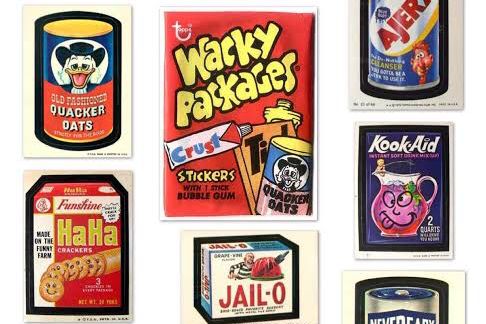
Another major craze of the 1970s was collecting Wacky Packages stickers. Produced by Topps, these parody stickers spoofed everyday products with humorous names and silly artwork, like “Crust” instead of Crest toothpaste or “Gadzooka” instead of Bazooka gum. Kids loved the mischievous humor and traded the stickers like treasure, plastering them on notebooks, binders, or bedroom doors. The playful designs poked fun at advertising itself, which was everywhere in the decade. Wacky Packages became a cultural phenomenon, sparking both laughter and a sense of rebellion among kids who enjoyed turning ordinary brands into jokes.
21. Saturday morning cartoons
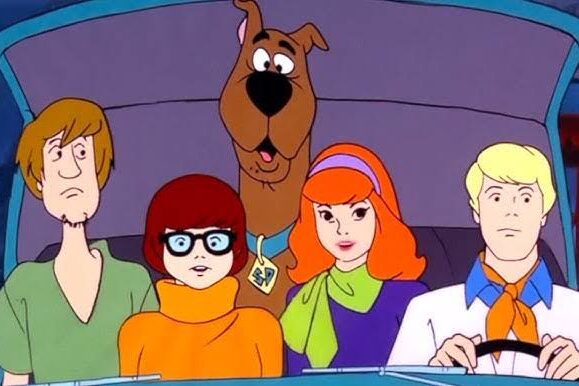
For kids in the 1970s, Saturday mornings were sacred. From the moment the sun came up, children camped in front of the TV for hours of nonstop cartoons. Shows like Scooby-Doo, Where Are You!, The Flintstones, and Super Friends filled the airwaves, often sandwiched between sugary cereal commercials. This was the only time of the week when networks devoted entire blocks to children’s programming, making it feel like a special event. Pajamas, cereal bowls, and laughter became part of the ritual. Unlike today, when cartoons are available anytime, Saturday mornings carried a magic that made the wait worthwhile.
22. Black-and-white TVs
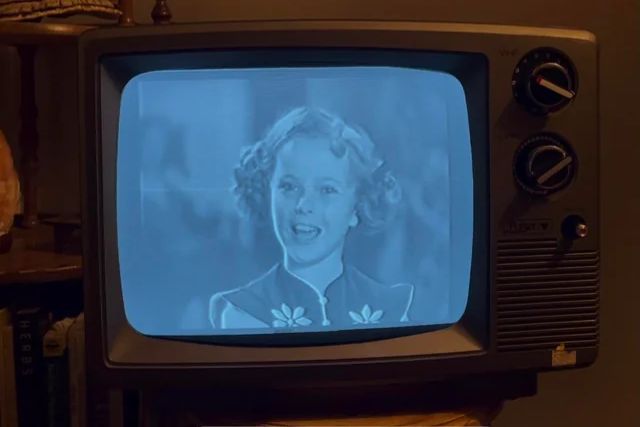
By the 1970s, color televisions were becoming more common, but many households still had black-and-white sets. Families often placed them in bedrooms or kitchens as second TVs, while the living room featured the newer color model. Watching shows like Gilligan’s Island or I Love Lucy in black-and-white gave a different feel, even though the world outside was full of color. Kids sometimes grew up not realizing their favorite characters’ clothes had bright hues until they later saw reruns on color sets. For many, those smaller black-and-white TVs were a comforting part of daily life, especially when parents controlled the main television.
23. Eight-track tapes
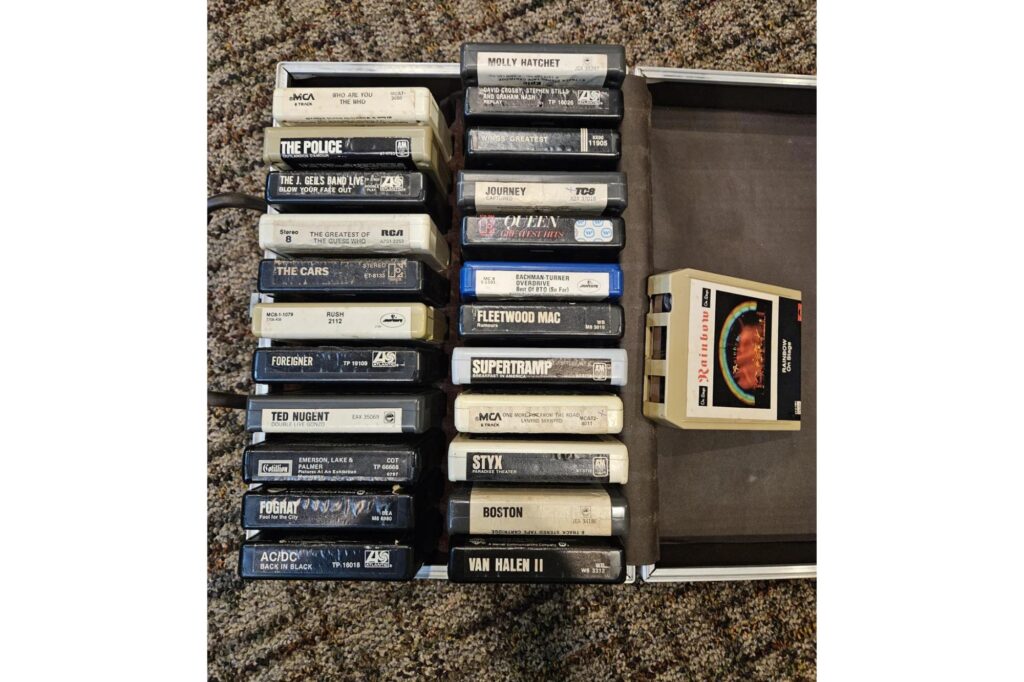
Music in the 1970s often came from the chunky eight-track tape, which played continuously in cars and home stereos. The tapes were known for their distinctive “clunk” sound when switching tracks mid-song, sometimes cutting right through the middle of a favorite tune. Despite this quirk, eight-tracks were beloved because they offered long play times and portability. Road trips often included stacks of tapes from artists like Fleetwood Mac, Led Zeppelin, or Elton John. They represented freedom, letting music travel with you beyond the living room record player. Though later replaced by cassettes, eight-tracks remain a symbol of ’70s listening habits.
24. CB radios
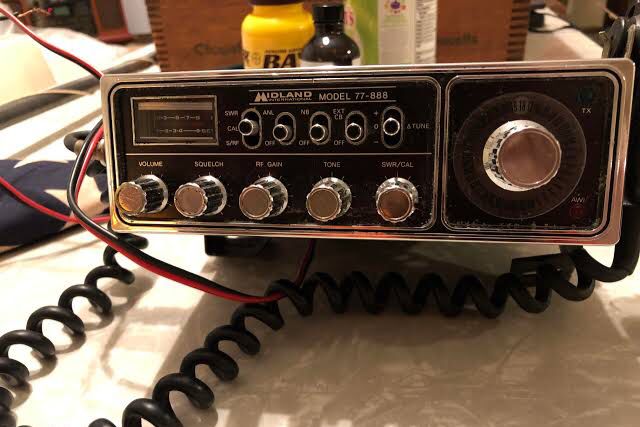
Citizens Band radios, better known as CB radios, were a craze in the mid-1970s, especially among truckers and hobbyists. Using a simple setup, people could chat with others nearby using fun slang like “10-4, good buddy.” Movies like Smokey and the Bandit and songs like “Convoy” helped fuel the trend, making CB radios a cultural phenomenon. Families installed them in cars for road trips, kids tried learning the lingo, and truck drivers became pop culture heroes. It was an early form of social networking, connecting strangers over the airwaves and making communication feel adventurous.
25. Jiffy Pop popcorn
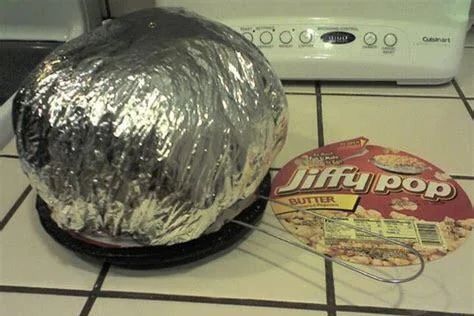
Before microwaves became common, Jiffy Pop was the exciting way to make popcorn at home. The shiny foil pan expanded as it heated on the stovetop, swelling into a balloon-like dome filled with freshly popped kernels. Watching it puff up felt almost like a science experiment, and the sizzling sound added to the anticipation. Families often made Jiffy Pop for movie nights, camping trips, or sleepovers, where the process itself was half the fun. Even though microwave popcorn eventually took over, many people who grew up in the ’70s still remember the thrill of shaking that foil pan and waiting for the magic.
26. Afros, mullets, and shag haircuts all proudly coexisting
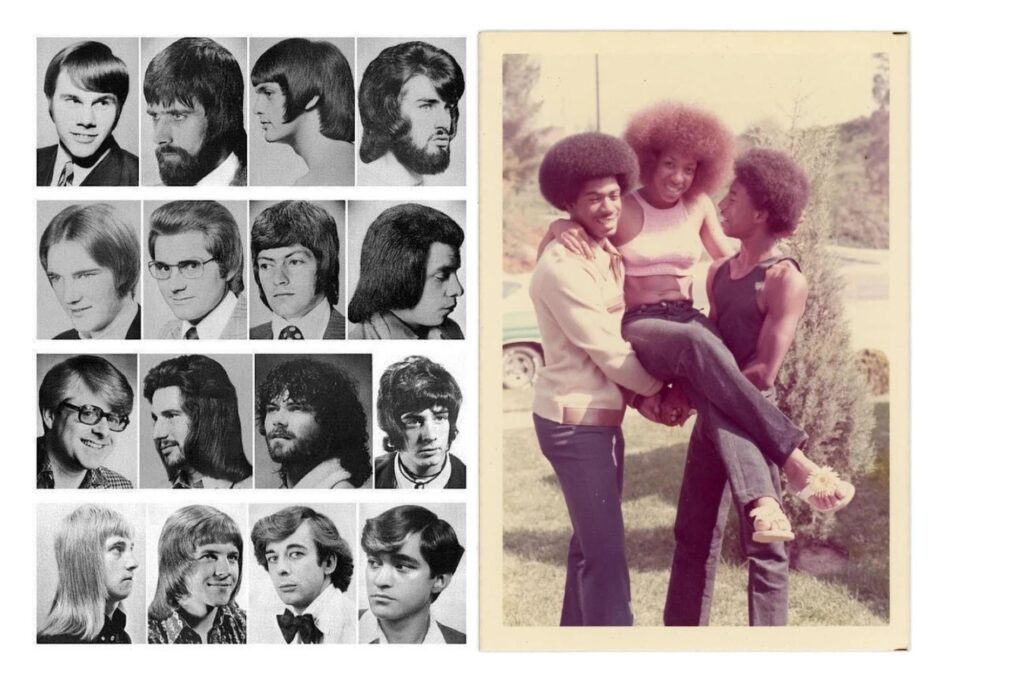
The 1970s were a time when hair was as much a statement as clothing. The Afro stood tall as a powerful symbol of pride and identity, with stars like Pam Grier and Kareem Abdul-Jabbar popularizing the look. At the same time, rock fans leaned into mullets, with short hair in the front and long in the back, a style that blended rebellion with practicality. Then there was the shag haircut, made famous by celebrities like Jane Fonda and David Cassidy, with its layered, feathered look that seemed effortlessly cool. What made the decade unique was that these very different hairstyles all thrived at the same time. Walking down the street, you could see teenagers with blow-dried shags, disco-goers with giant Afros, and musicians with flowing mullets, each reflecting a different cultural current of the era.
27. Earth shoes and platform shoes battling for fashion dominance
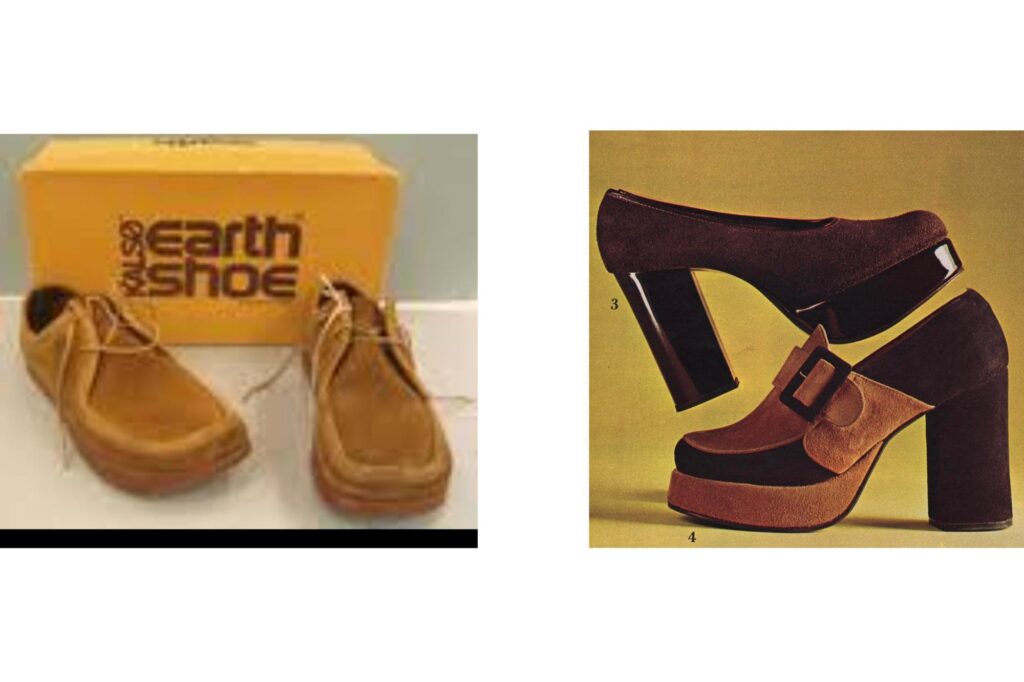
Shoes in the 1970s were more than footwear, they were fashion battlegrounds. Earth shoes, with their negative-heel design that sloped downward from heel to toe, promised health benefits and a natural way of walking. They became a hit with those leaning toward a back-to-nature lifestyle. On the opposite end of the spectrum were platform shoes, stacked with thick soles and often covered in glitter, velvet, or wild colors. These were disco favorites, worn by everyone from Donna Summer to everyday teens hitting the roller rink. The two couldn’t have been more different: Earth shoes whispered comfort and simplicity, while platform shoes shouted flash and fun. Yet both had legions of fans, making shoe racks across America a mix of earthy browns and sparkling silvers.
28. Listening to vinyl records on giant, furniture-sized stereos

Before compact stereos and digital players, music in the 1970s came from enormous hi-fi systems that doubled as living room furniture. These console stereos were often encased in polished wood, with heavy speakers built right in, and took up a good chunk of space in the home. Families gathered around them to play vinyl albums, whether it was Fleetwood Mac’s Rumours or the latest Jackson 5 single. The sound had warmth and richness, partly due to the analog technology, and flipping the record to hear Side B was part of the ritual. Kids remember lying on shag carpet with the album cover spread out, studying every lyric and piece of artwork while the record spun. For many, that stereo wasn’t just a machine, it was the centerpiece of home entertainment, shared by everyone in the household.
29. Watching Happy Days, Charlie’s Angels, and The Love Boat religiously

Television in the 1970s created shows that became cultural touchstones. Happy Days brought the nostalgia of the 1950s into family living rooms, with the Fonz becoming a national icon. Charlie’s Angels broke ground with its trio of glamorous private detectives, quickly turning Farrah Fawcett into a household name. Meanwhile, The Love Boat offered viewers a weekly escape, with romantic storylines and celebrity guest stars cruising across the Pacific Princess. Families often built their schedules around these shows, gathering in the living room to catch every episode. In an era before streaming or DVR, missing an episode meant waiting for a rerun, so the excitement of “TV night” was very real. These shows weren’t just entertainment; they were part of the cultural fabric, sparking fashion trends, catchphrases, and endless conversations at school or the office.
30. Swanson TV dinners in foil trays, hot on the outside, frozen in the middle
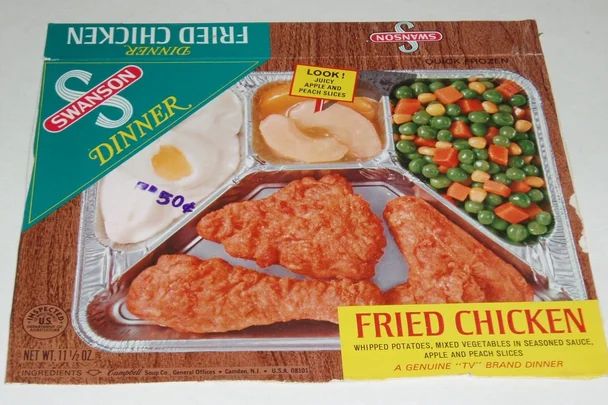
Frozen TV dinners were both a convenience and a novelty in the 1970s, and Swanson led the way. Packaged in aluminum foil trays, these meals often included a main dish like fried chicken or Salisbury steak, with sides of mashed potatoes, corn, or peas, and sometimes even a small dessert. They were marketed as a modern solution for busy families, letting anyone have a full dinner by simply popping it in the oven. The reality, however, wasn’t always perfect, parts of the tray would come out piping hot while others stayed icy. Still, kids loved the novelty of getting their own compartmentalized meal, and parents appreciated the ease. Sitting in front of the TV with a tray balanced on a lap, watching the evening’s shows, became a familiar scene in many American households.
31. Riding your banana-seat bike until the streetlights came on

For many kids in the 1970s, freedom meant hopping on a banana-seat bike and riding with friends until dusk. These bikes were instantly recognizable with their long, cushioned seats, high handlebars, and sometimes even sissy bars at the back. Brands like Schwinn made them in bold colors with striped seats or glitter finishes that made kids feel unstoppable. Riding around the neighborhood, doing wheelies, or pretending the bike was a motorcycle became daily adventures. Parents often gave one simple rule, be home when the streetlights turned on. That glowing cue at sunset was the unofficial clock for a generation, marking the end of carefree afternoons and the beginning of dinner and homework.
32. Waterbeds that seemed futuristic until they sprung leaks

The waterbed became a cultural sensation in the 1970s, marketed as a space-age alternative to traditional mattresses. First patented in 1971, these beds promised comfort, relaxation, and even therapeutic benefits. Ads often promoted them as luxurious and modern, and many people bought them as a symbol of being “with the times.” The idea of lying on a gently shifting surface was fascinating, but reality sometimes clashed with the dream. Leaks were a common problem, soaking floors and creating frustration for owners. Still, the waterbed represented an era eager for innovation, blending lifestyle trends with futuristic flair. Having one in your bedroom was a statement that you were living in the modern age, even if it came with its own set of headaches.
33. The magic of mood rings that definitely knew your feelings
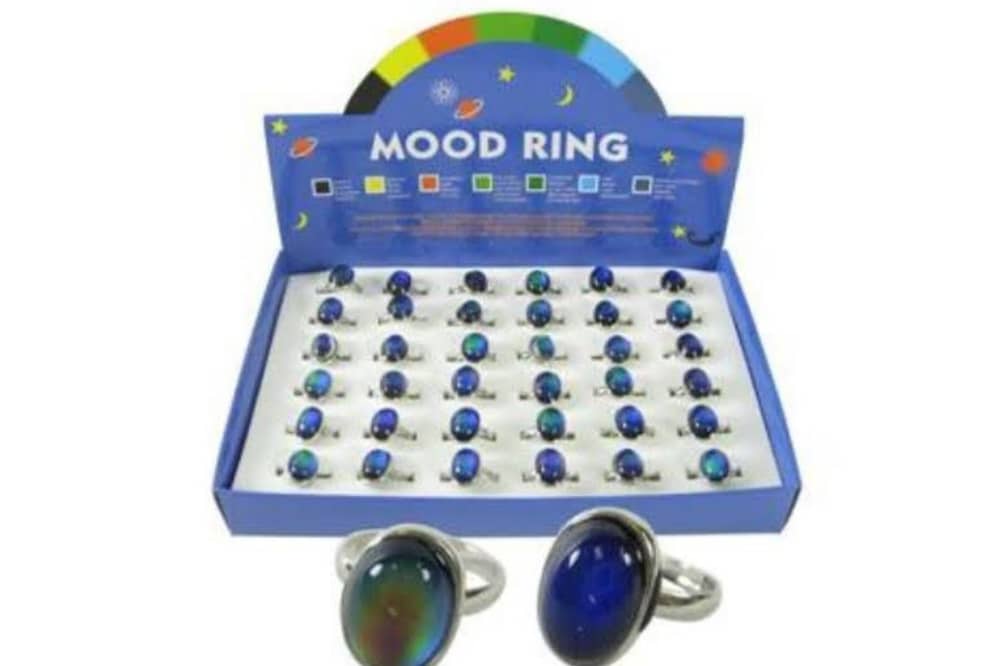
Mood rings were tiny treasures of the 1970s, promising to reveal a person’s emotions through color changes. Invented in 1975, these rings contained liquid crystals that responded to changes in temperature, shifting from blue to green, brown, or black. The idea was simple: the color reflected your mood, blue for calm, black for stressed, green for relaxed. While science said they were really just reacting to body heat, kids and teens loved to believe in their mystical powers. Wearing one sparked conversations, and people often compared ring colors with friends as if it were a window into their inner world. For a small piece of jewelry, mood rings captured the playful mix of science, style, and imagination that defined the decade.
34. Writing chain letters by hand because email wasn’t even a dream
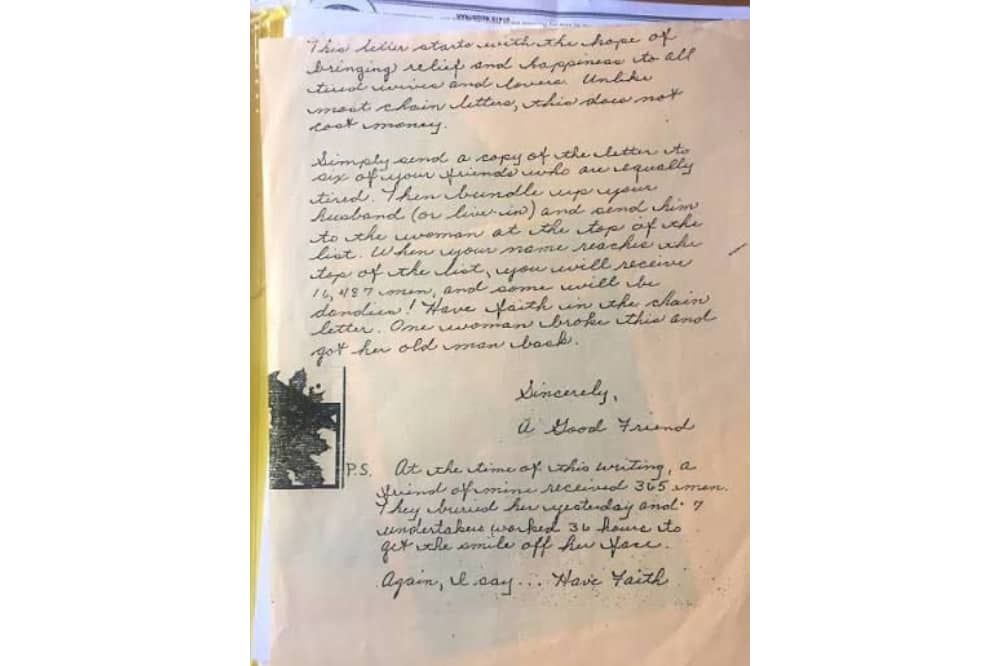
Long before email or social media, chain letters traveled from hand to hand, often filling school hallways with excitement. These handwritten notes carried instructions to copy the message and pass it on to a certain number of people to ensure good luck, or avoid bad luck. Some promised friendship, money, or even romance if you kept the chain going. Kids would carefully copy them word for word onto notebook paper, addressing envelopes, buying stamps, and sending them through the mail. It was a slow process, but part of the fun was waiting to see if anything “magical” would happen once the chain continued. While adults rolled their eyes, kids and teens treated chain letters like secret rituals of connection in a world without instant communication.
35. Watching Evel Knievel’s daredevil stunts on TV like it was the Super Bowl
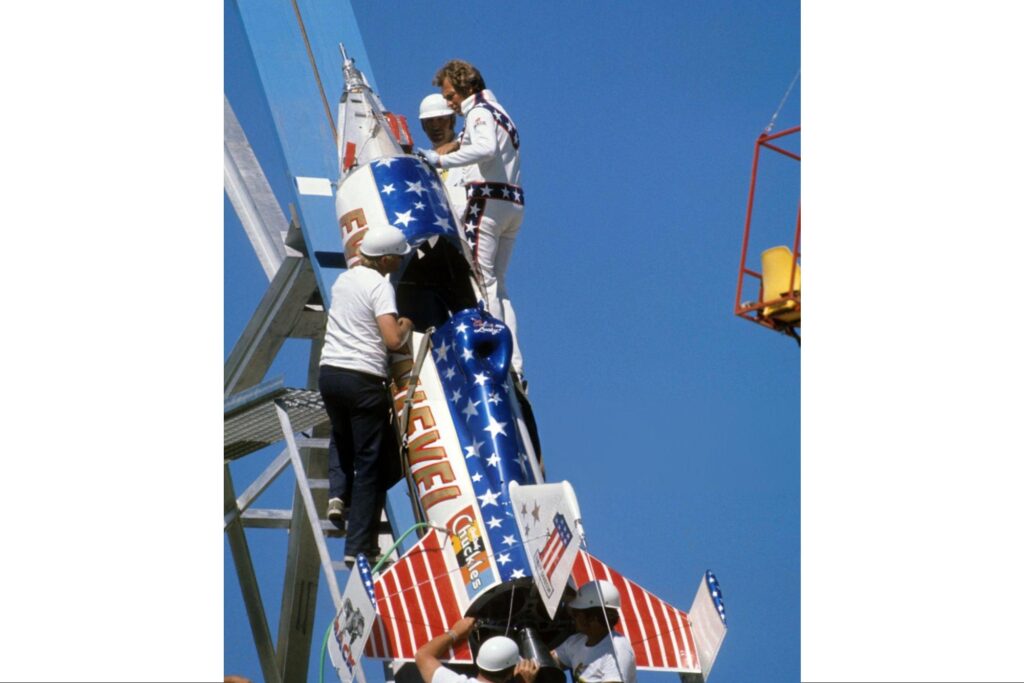
In the 1970s, no stuntman was bigger than Evel Knievel. Wearing his star-spangled jumpsuit and riding his motorcycle, he attempted dramatic feats that captured national attention. From jumping over rows of cars and buses to his famous Snake River Canyon rocket attempt in 1974, his stunts were televised events that families tuned in to watch together. Kids idolized him, often reenacting his jumps with toy ramps and bikes in the backyard, pretending to be as fearless as the man himself. While many of his attempts ended in crashes, Knievel’s determination and showmanship made him a cultural legend. Watching one of his stunts felt like a national event, a mix of suspense, excitement, and the thrill of seeing someone push the limits of possibility.
36. Hostess fruit pies and Twinkies tucked into every lunch bag
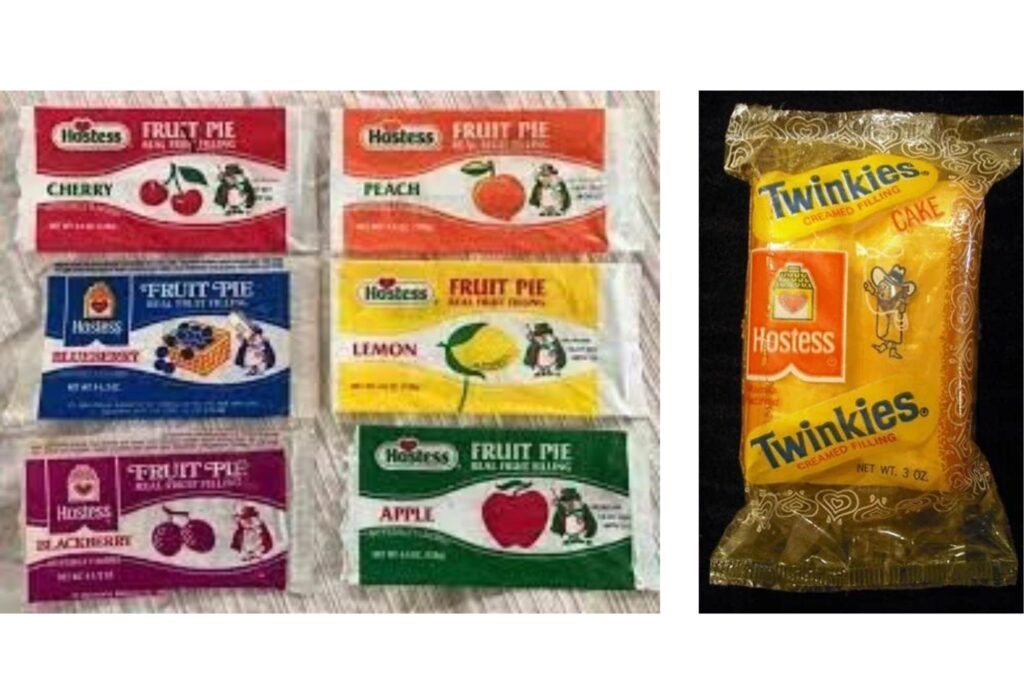
Packaged treats from Hostess were a lunchtime ritual: individually wrapped fruit pies with their shiny foil and the iconic Twinkie, soft sponge cake with a creamy filling, were almost guaranteed to appear in school lunchboxes or after-school snack swaps. These snacks were cheap, shelf-stable, and heavily marketed on TV, so kids learned the jingles and mascots as readily as the flavors. For parents balancing time and budgets, a wrapped dessert that didn’t require refrigeration was a practical win, and kids loved the novelty of trading or showing off which flavor they’d scored that day. The wrappers, mascots, and cardboard boxes also fed into playground culture, knowing where to find the best snack or getting a rare flavor could make a kid the center of attention. Beyond the sugar, those little packaged desserts are remembered as tiny, reliable comforts, simple treats that punctuated a day of homework, TV, and backyard play.
37. Collecting S&H Green Stamps for “free” stuff

S&H Green Stamps turned ordinary shopping into a slow, satisfying reward system: supermarkets and some service stations handed out adhesive stamps with purchases, and families pasted them into booklet pages until the books were full. Once a stack of completed booklets was collected, you took them to the catalog or redemption center and chose from a selection of household items, toys, or small appliances, an exercise in patience and planning. Kids often took pride in licking and pressing stamps into the books, and parents kept an eye on promotions to earn bonus stamps. The stamps encouraged brand loyalty and made shopping feel like a contest where saving and consistency paid off. For many households the ritual of saving and redeeming stamps was genuinely useful: a family could end up with a set of cookware, a clock radio, or a toy without paying the sticker price, and the whole process became a shared, seasonal activity tied to grocery runs and payday shopping.
38. Getting up to change the TV channel because remotes weren’t standard

Before remote controls were commonplace, changing channels meant physically walking to the television and twisting a dial or flipping a mechanical switch, an action that shaped family routines and small domestic rituals. Old console TVs often sat in a living-room focal point, and someone in the household earned the informal job of “channel changer,” especially during popular shows or scheduled broadcasts. That minor interruption, everyone pausing their conversation while a family member trotted over to the set, created a kind of communal choreography: kids would shout the channel number, parents would negotiate what to watch, and the sound of a clicking dial became part of the evening soundtrack. Universal remotes and channel-changing technology arrived gradually; until then, the simple act of getting up to switch the TV bound people together in small, ordinary ways and made missing the start of a program more likely, so families learned to plan around broadcast times or politely barter viewing turns.
39. Roller rinks blasting disco hits under a mirror ball
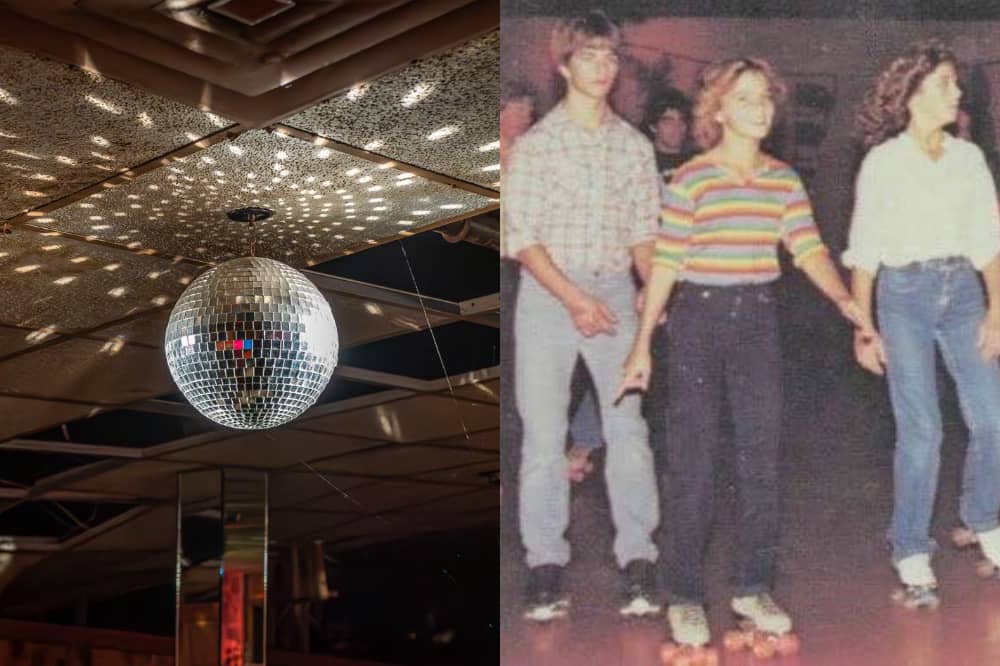
Roller rinks were theatrical social hubs where lights, music, and movement came together: a polished wooden floor, a giant mirror ball throwing shards of light, and a speaker system playing the danceable disco beats of the day made for a magical weekend scene. Teens and families gathered for birthday parties, dates, or just to hang out; the rink combined exercise, performance, and socializing in one place. Skaters learned routines, practiced spins, and showed off fashion, bell-bottoms, shiny shirts, or platform shoes, while DJs or rink operators mixed popular tracks and slow songs for couples. The mirror ball reflected personality and atmosphere, turning every lap into something cinematic. For many, a night at the rink was a rite of passage: you learned to skate, you met friends or crushes, and you left with memories of laughter, scraped knees, and the echo of a favorite chorus that still transports people back to that warm, neon-lit groove.
40. Making Shrinky Dinks in the oven
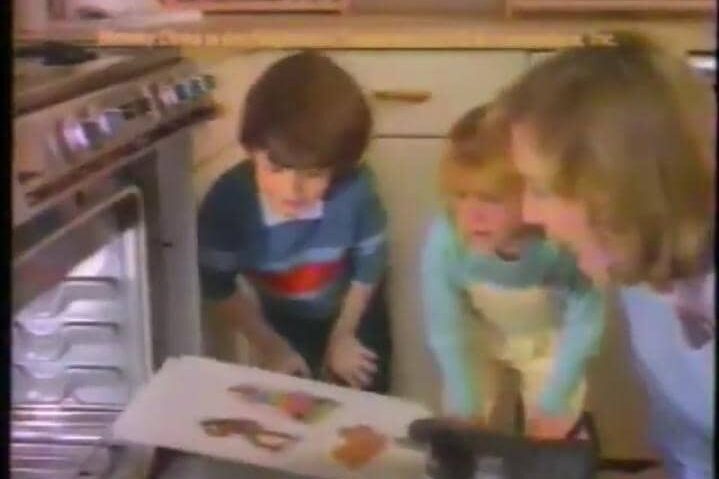
Shrinky Dinks transformed a simple art project into small, immediate magic: kids colored or traced designs on thin plastic sheets, cut them out, and then watched as the shapes curled, shrank, and hardened in the oven into tiny, durable charms. The dramatic, hands-on process, peering through the oven window as the plastic buckled, then flattened into a miniature version of the original, made crafts feel like science, and the finished pieces became keychains, jewelry, or gifts. Because the materials were inexpensive and the results varied with color choices and cuts, Shrinky Dinks encouraged experimentation and personalization. The kit-style nature of the craft fit perfectly into after-school free time and birthday parties, and the tactile satisfaction of creating something that visibly changed in size and texture is a memory many people attribute to childhood curiosity, the kind of project that combined creativity, anticipation, and the small triumph of turning a flat drawing into a tiny keepsake.
41. Gum stuck everywhere: in hair, under desks, on shoes
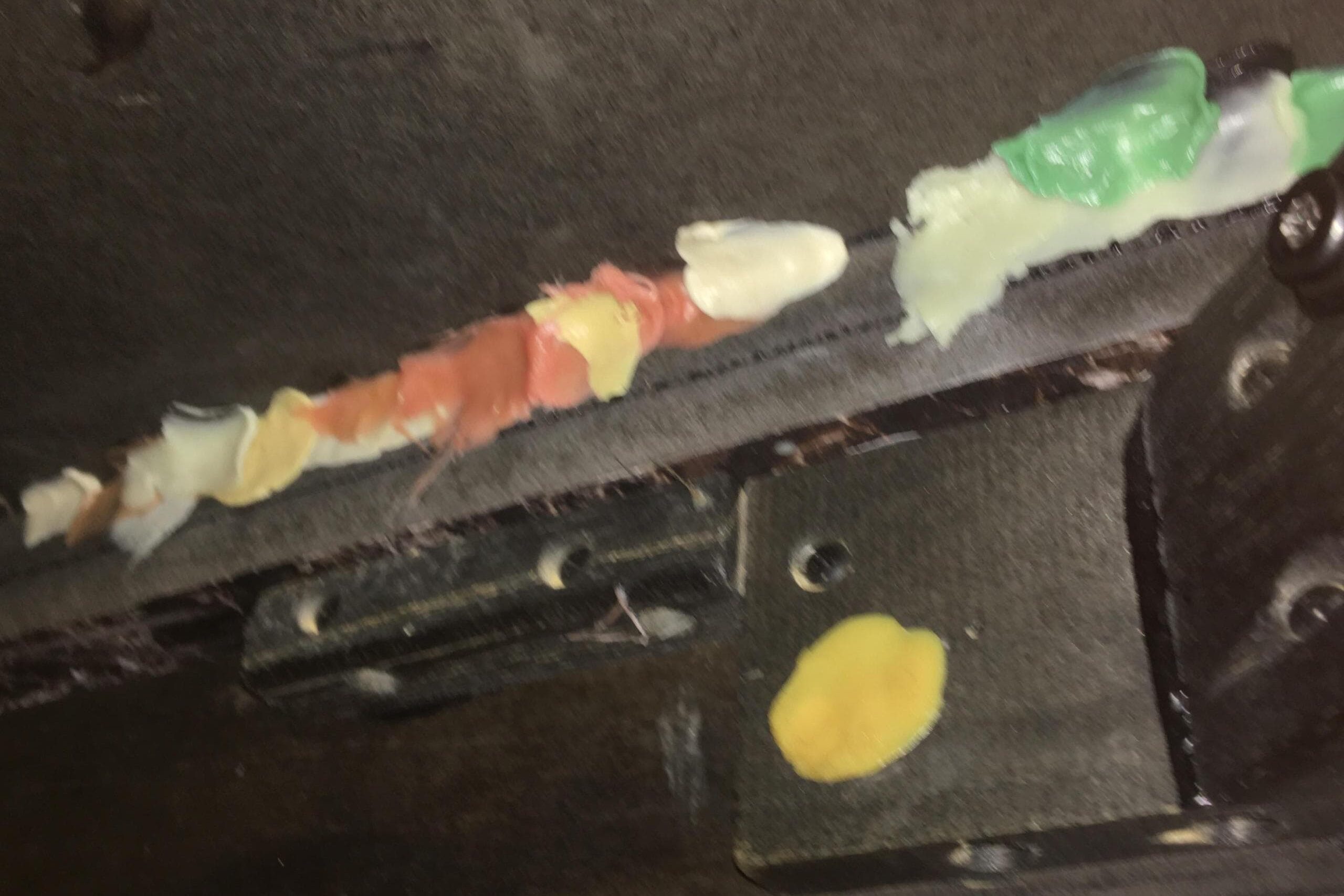
Chewing gum was everywhere in the 1970s, and so were the sticky consequences. Kids routinely popped a piece between classes or blew bubbles at recess, and the playground, schoolyard, and classroom bore the evidence: hardened wads under desk lids, gooey clumps on sidewalks, and the dreaded moment when gum found its way into a friend’s hair. Fixes were improvised, parents recommended peanut butter, ice cubes, or a careful snip to remove hair tangles, while teachers and janitors waged a quiet battle to keep seats and hallways clean. Popular brands were part of the culture, and trading pieces or keeping a favorite flavor was its own little ritual. Because gum was cheap and portable, it became a constant companion on bike rides, in coat pockets, and under lunch trays; the mess it left behind became one of those small, tactile memories that immediately transports people back to school days and summer afternoons.
42. Avon catalogs with tiny perfume samples
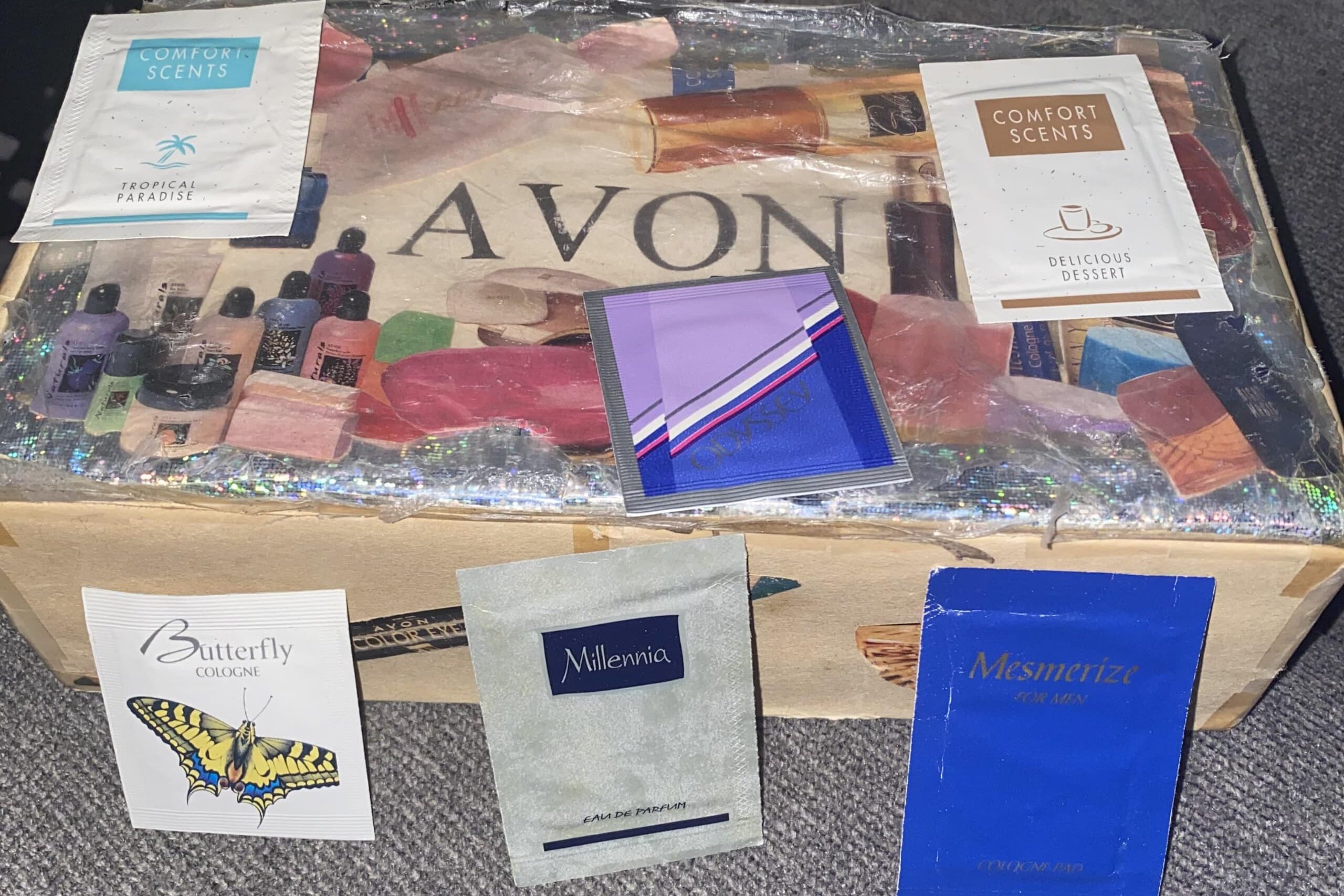
The Avon catalog and the local Avon representative were fixtures of neighborhood life in the 1970s. Homes received glossy booklets filled with cosmetics, jewelry, and fashions, and tucked into many pages were tiny fragrance strips or sample vials that let you sniff a perfume before ordering. Browsing an Avon catalog at the kitchen table became a shared ritual, mothers and daughters comparing lipstick shades, circling gift ideas, or admiring collectible Avon bottles shaped like animals and cars. Ordering was done by phone or by filling out a form and handing it to the Avon lady on her next visit, which made shopping a social exchange rather than an anonymous transaction. For many families, the catalog offered an affordable way to follow beauty trends, try new scents, and enjoy the small pleasure of receiving a parcel with a neatly wrapped product, an intimacy and convenience that felt distinctly personal in an era before online shopping.
43. The sound of typewriter keys clacking away
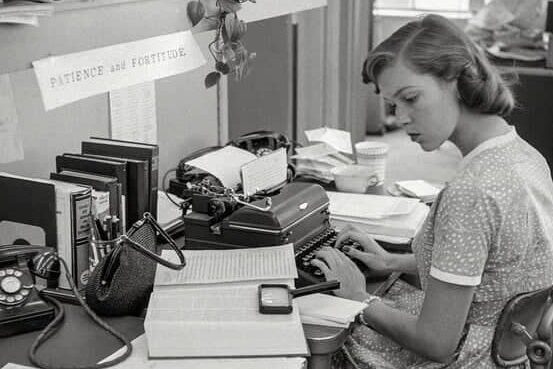
Typewriters provided the unmistakable soundtrack of offices, classrooms, and homes before computers arrived. The mechanical rhythm of keys striking paper, the high-pitched “ding” that marked the carriage return, and the smooth slap of the platen rolling a fresh line were everyday sounds that meant work, and a certain seriousness, was underway. Typing required focus and accuracy; mistakes couldn’t be deleted with a keystroke and often meant retyping a page or carefully using correction fluid or tape. Schools taught touch-typing on heavy manual or electric machines, and students learned to respect margins and spacing the way earlier generations learned penmanship. Business correspondence, term papers, and even family newsletters were produced on these machines, and the tactile feel of satisfying keystrokes left a sensory imprint: hearing that clack can instantly summon images of neat carbon copies, ribbon ink, and the steady productivity of a pre-digital age.
44. The glow-in-the-dark stars that didn’t actually glow very long
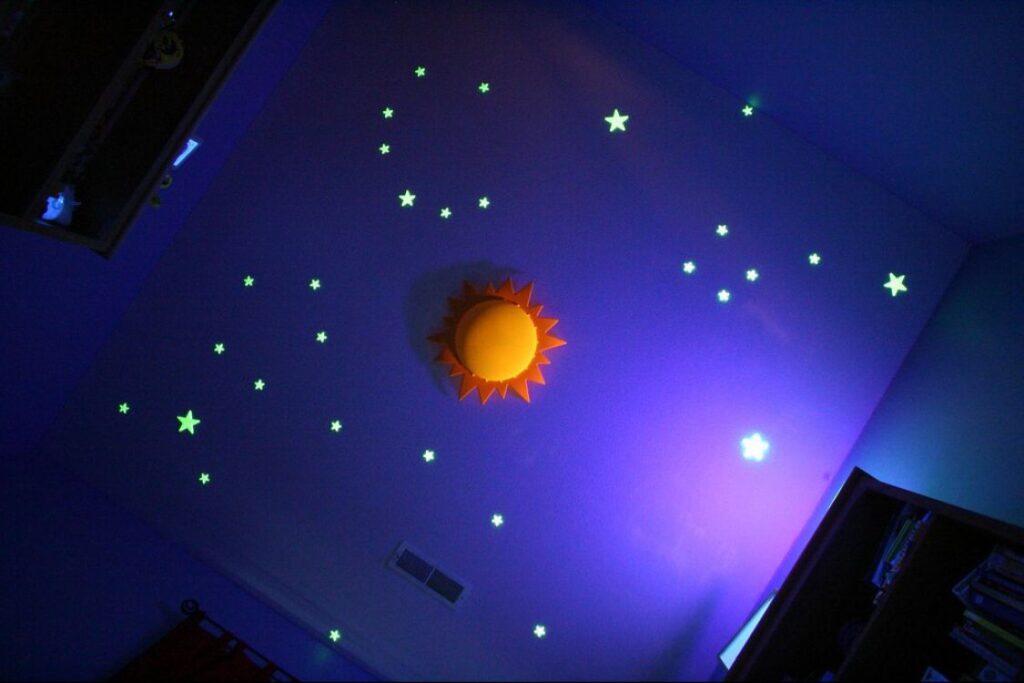
Peel-and-stick glow-in-the-dark stars promised a private night sky and became a bedroom staple for kids in the 1970s. Children plastered ceilings with constellations of plastic stars and moons, imagining a cosmos that twinkled after lights-out, only to discover that the glow usually faded within minutes. The trick was to “charge” them with a bright lamp or flashlight, and many evenings included the ritual of aiming a desk lamp at the stickers to get the best effect. Despite the short-lived glow, the stickers sparked imagination: kids rearranged constellations, traced shapes with their fingers in the dark, or used a map to mimic familiar star patterns. The stickers were inexpensive, portable, and an easy way to make a bedroom feel like a tiny, private planetarium, small, fleeting magic that was more about the play and ritual than any lasting luminosity.
45. Garbage Pail Kids’ precursors: anything gross was cool
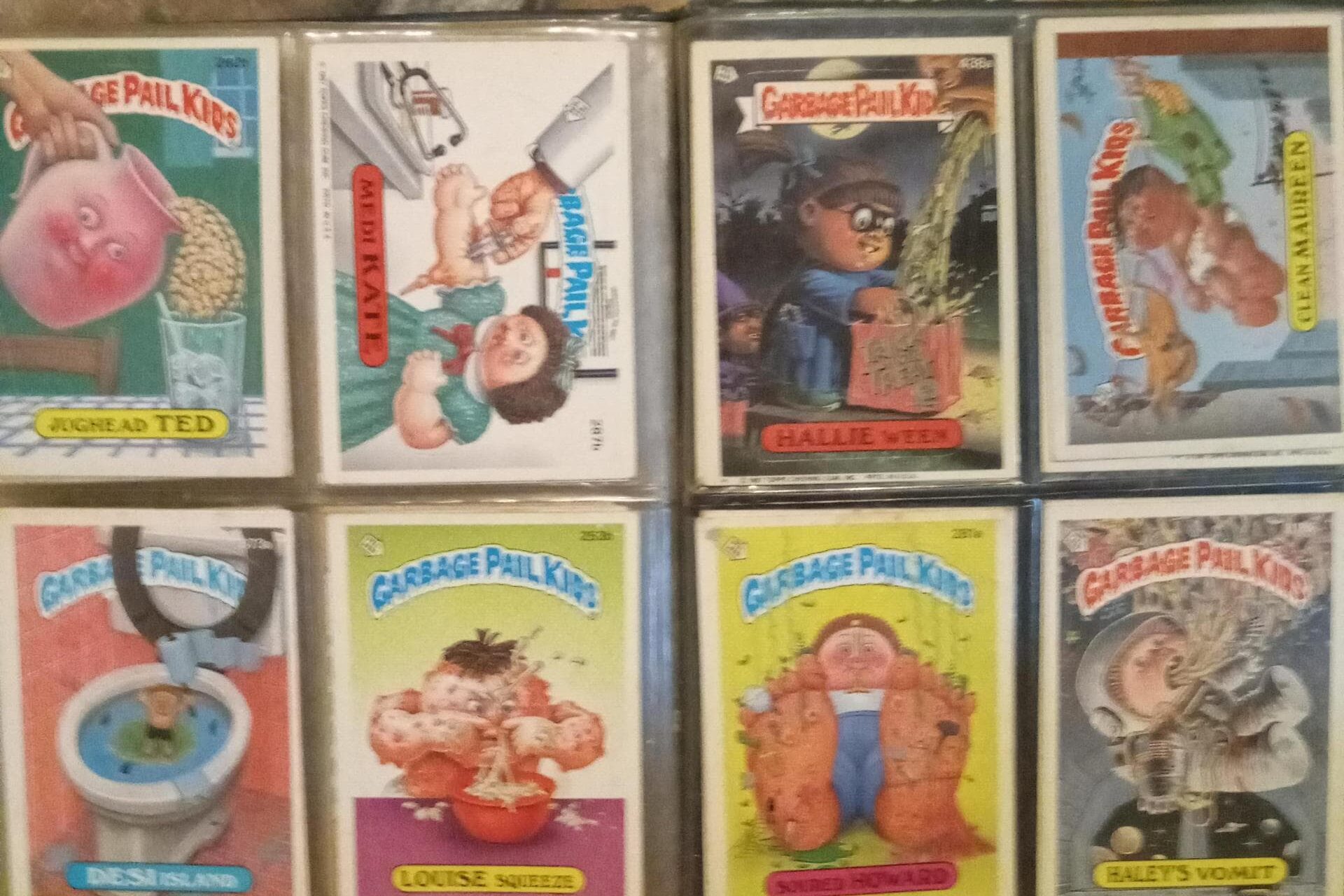
Long before Garbage Pail Kids trading cards became a phenomenon in the 1980s, the 1970s cultivated a healthy appetite for the gross and ridiculous. Novelty shops, comic magazines, and schoolyard pranks celebrated slimy, silly, and shocking items: fake vomit, rubber insects, whoopee cushions, and gag toys were badges of playful rebellion. Mad Magazine’s irreverent humor helped normalize that tone, and kids delighted in anything that made adults wince or classmates laugh. Collecting and showing off these items was its own social currency, if it made someone squeal or snort, it was automatically cool. That love of the disgusting and offbeat set the cultural stage for later collectible series that leaned into gross-out humor, and it’s remembered as a time when sensory shock and silly pranks were harmless ways for kids to test boundaries and bond over shared, silly outrage.
46. Smoky bowling alleys with neon carpet
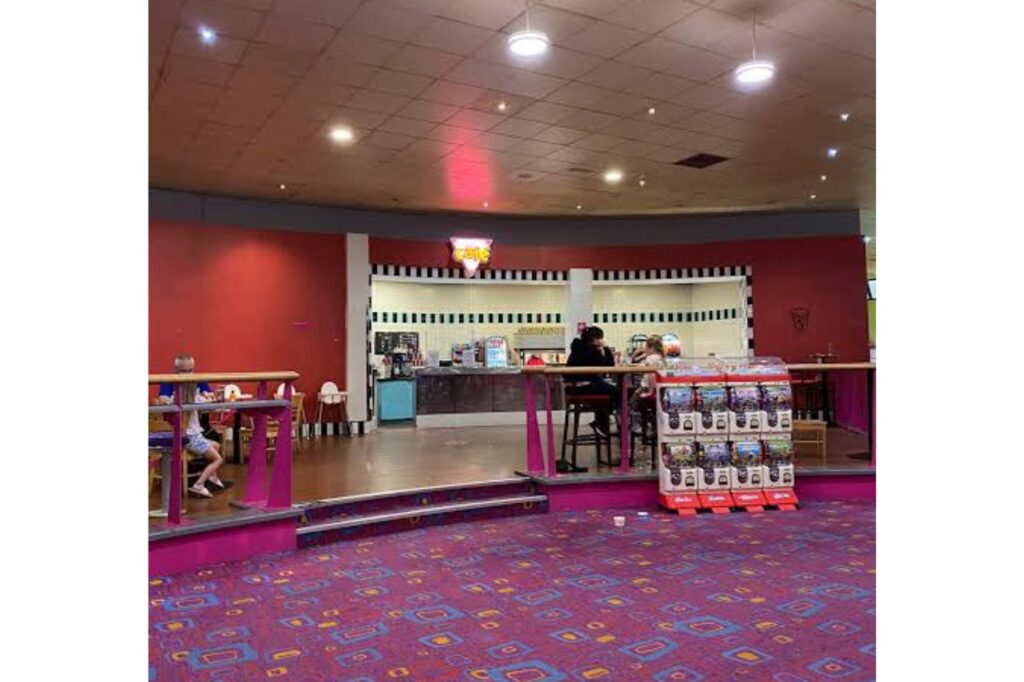
Bowling alleys in the 1970s had a distinct atmosphere: the crash of pins, the steady hum of ball return machines, and the unmistakable haze of cigarette smoke that hung in the air. Smoking indoors was still common, and alleys were among the most popular social spaces for families, leagues, and teenagers alike. Many featured bold, colorful carpets that glowed under blacklight, paired with flashing neon signs and plastic seating. Bowling wasn’t just a game, it was an event, often accompanied by arcade games, jukebox music, and trays of fries or pizza from the snack counter. The smoky, neon-drenched environment was part of the sensory experience, and for those who grew up in the decade, even the faint smell of bowling shoes can bring it all back.
47. Drinking from the garden hose without a second thought

For kids in the 1970s, playing outside often meant running until you were thirsty, then grabbing a quick drink straight from the garden hose. The water had a metallic taste at first, especially if it had been sitting in the hose under the hot sun, but no one worried about bottled water or filters. Parents encouraged outdoor play and gave kids free rein, and the garden hose was the universal water fountain of summer. It was practical, keeping kids outdoors longer and reducing trips back inside, and it became tied to the memory of hot afternoons, backyard games, and neighborhood adventures. Simple and unpolished, that garden-hose gulp became part of the fabric of childhood freedom.
48. Aluminum Christmas trees with rotating color wheels
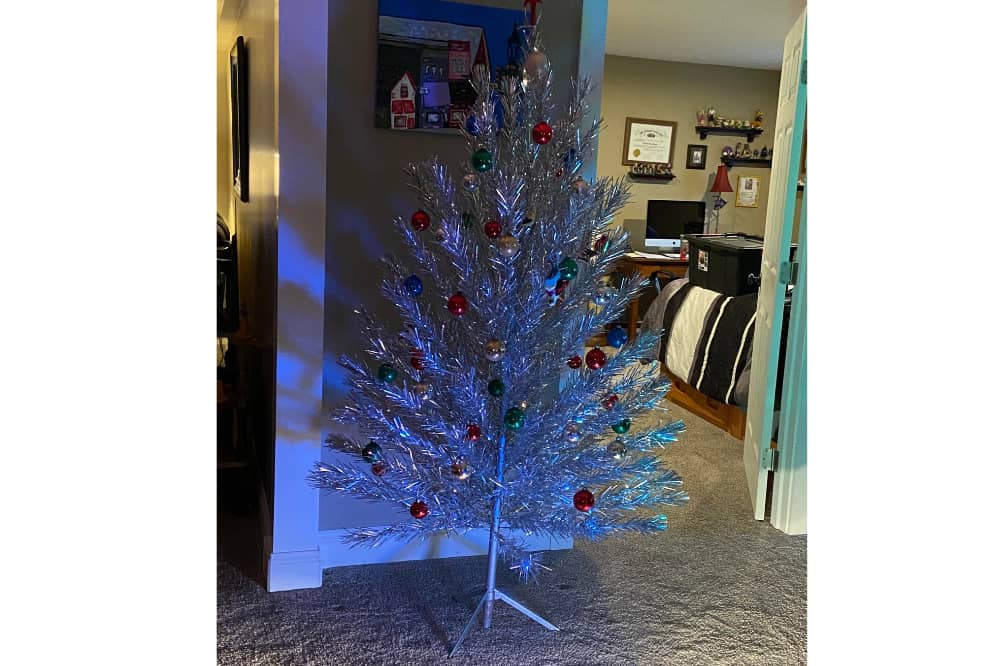
Holiday decorations in the 1970s often included the eye-catching aluminum Christmas tree, shimmering in metallic silver. These trees were paired with rotating color wheels that cast changing shades of red, blue, green, or yellow across the branches, creating a dazzling display in living rooms. They offered a futuristic alternative to real pine trees, eliminating needles on the carpet while delivering a shiny, modern aesthetic. Families gathered around them just as they would a traditional tree, hanging ornaments and stacking gifts beneath the silvery limbs. Though critics dismissed them as kitschy, the aluminum tree became a seasonal icon of the decade, blending technology and tradition in a way that perfectly captured the era’s style.
49. The smell of Play-Doh

Few childhood scents are as instantly recognizable as the sweet, doughy smell of Play-Doh straight from its little yellow tub. In the 1970s, Play-Doh wasn’t just a toy, it was a creative outlet that encouraged kids to sculpt, mash, and imagine. Whether making pretend food, tiny animals, or simple shapes, children could spend hours lost in play. The pliable texture made it endlessly reusable, and parents liked that it was relatively mess-free compared to paint or clay. For many, just opening the lid brought a burst of nostalgia. The scent itself became so iconic that Hasbro even released a Play-Doh–scented perfume decades later, proving how strong the memory remained.
50. Creepy Crawlers That Burned More Than They Entertained
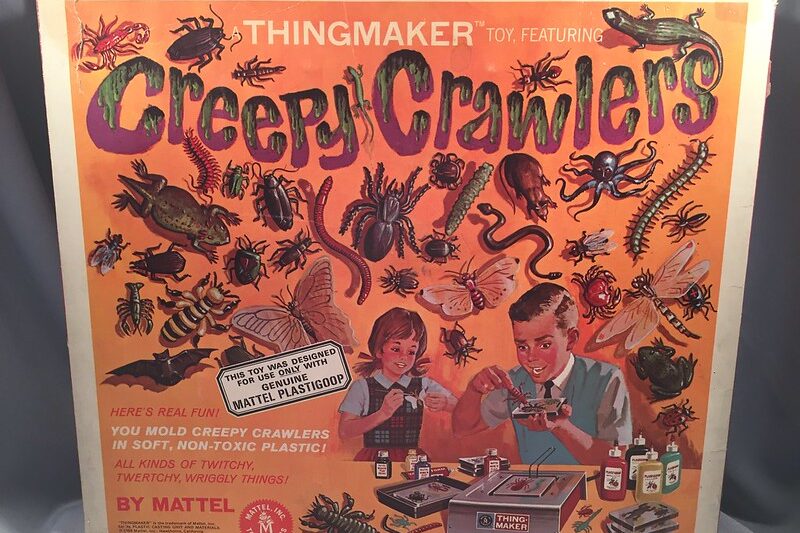
Childhood in the 1970s was often marked by toys that felt magical yet risky, and Creepy Crawlers were exactly that. Kids poured colorful “Plasti-Goop” into metal molds and slid them into a special oven to bake. The thrill of watching those slimy creations form was unforgettable, but the little ovens got scorching hot and burns were all too common. Parents worried about the danger, yet children loved the smell and the excitement of pulling out rubbery bugs to show off. The original Creepy Crawlers captured curiosity, fun, and just enough danger to make the memory linger for decades.
51. Jarts Lawn Darts That Sent Kids to the ER
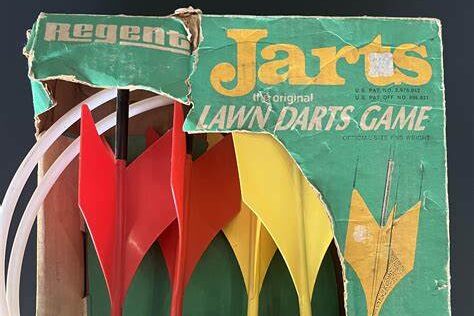
Every backyard gathering in the 1970s seemed to feature Jarts, also known as lawn darts. The game was simple, toss heavy darts toward a plastic ring target placed in the grass. What made it thrilling also made it dangerous, the sharp metal tips could cause serious accidents when misfired. Kids played anyway, laughing and competing while parents nervously watched from lawn chairs. Emergency rooms filled with cases until the game was banned, but its place in memory remains secure. Jarts were part of summer fun, a mix of excitement and risk that kids never quite forgot.
52. Click Clacks Breaking More Than Just Boredom
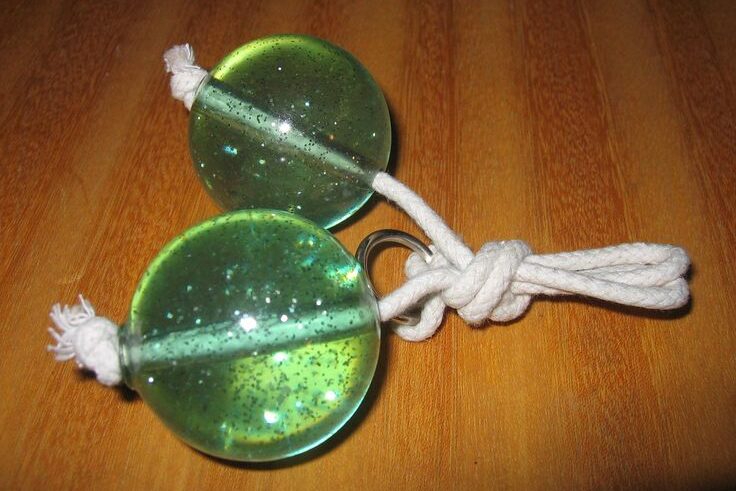
Playgrounds of the 1970s echoed with the clacking sound of Click Clacks, also called Clackers. Two hard acrylic balls swung on a string, smacking together in sharp rhythms that kids could not resist. The trick was to keep them swinging perfectly, but the reality often left bruises on wrists and knuckles. Sometimes the balls shattered mid-swing, sending shards flying dangerously close. Schools quickly banned them, yet their brief popularity left its mark. Children loved the challenge, the sound, and the bragging rights. Even if they hurt, Click Clacks are remembered as one of the wildest fads of the decade.
53. The Easy Bake Oven That Could Scald Fingers
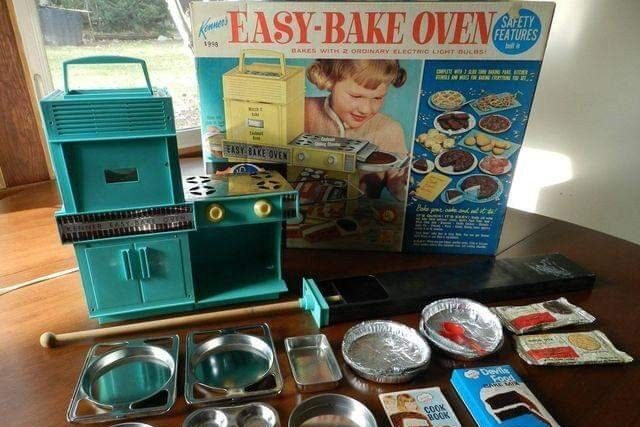
Easy Bake Ovens gave kids the magical chance to bake cakes and cookies with nothing more than the glow of light bulbs. The results were tiny but thrilling, a dessert made all by yourself. Unfortunately, those same bulbs heated enough to burn small fingers, leaving more than a few kids with blisters. Despite the risks, children proudly served their miniature cakes to family members, and parents allowed it for the sake of fun. The Easy Bake Oven became a childhood milestone, a mix of independence, patience, and just enough danger to keep the memory vivid decades later.
54. Pogo Sticks That Launched Kids into the Air

Few toys captured the daring spirit of the 1970s like pogo sticks. Kids bounced until their legs gave out, racing friends or trying to see who could stay up the longest. Scraped knees and sore elbows were part of the fun, while every fall hurt just enough to teach balance and resilience. Parents looked on nervously, but for children, each bounce felt like flying. The steady thump of pogo sticks echoed through neighborhoods all summer, a rhythm of laughter and challenge. The pogo stick taught kids determination, daring, and the simple joy of reaching higher with every jump.
55. Big Wheels Screeching Down the Driveway

Big Wheels were more than toys; they were freedom on three wheels. With oversized front tires and a low seat, these sturdy plastic rides were built for speed down driveways and spinning around corners. The screeching sound of hard plastic grinding against pavement became part of every summer afternoon. Crashes into bushes or fences were common, but the fun outweighed the scrapes. For kids of the 1970s, owning a Big Wheel meant status, the kind that let you race with friends and feel unstoppable. Big Wheels rolled their way into memory as symbols of independence, laughter, and fearless play.
56. Slip ’N Slides That Promised Fun and Delivered Bruises

Slip ’N Slides looked like backyard water parks in commercials, but reality was much bumpier. Kids sprinted, dove onto a long strip of thin plastic, and hoped they slid far enough without hitting dry grass or hard ground. Scrapes, belly flops, and bruises were part of the ride, yet that never stopped children from lining up again. The rush of cold water on a hot afternoon made every tumble worthwhile. Parents winced at the dangers while kids laughed, cheered, and kept running back for more. Slip ’N Slides delivered unforgettable thrills that came with sore bodies and happy memories.
57. Super Elastic Bubble Plastic That Smelled Like Trouble

Super Elastic Bubble Plastic came in small colorful tubes that promised fun but smelled suspicious from the start. Kids squeezed the goo onto little straws, blew carefully, and formed shiny bubbles that shimmered in the light. The plastic creations looked magical until they popped in sticky messes or collapsed before they floated away. Parents worried about the strong chemical fumes, but children loved the strange shapes they made. The toy was weird, smelly, and a little risky, yet its uniqueness made it unforgettable. Super Elastic Bubble Plastic remains a 1970s memory that mixed creativity with curiosity and chaos.
58. Cap Guns and the Smell of Gunpowder
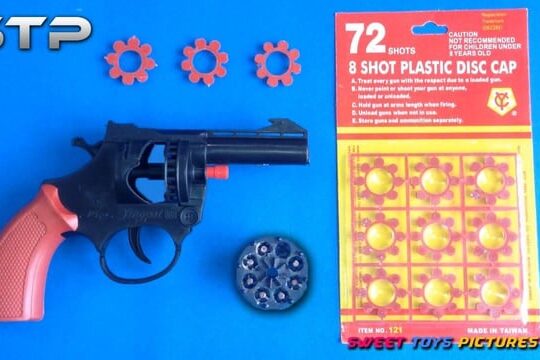
Cap guns turned ordinary afternoons into epic showdowns. With tiny paper rolls or plastic rings of caps, kids snapped triggers, filling the air with sharp pops and the unmistakable smoky smell of gunpowder. Pretend cowboys, spies, and action heroes ran through neighborhoods, shouting and laughing as clouds of smoke drifted. Fingers sometimes stung from sparks, but the thrill kept kids loading again. The sound of caps echoed across backyards, driveways, and sidewalks until dusk. Cap guns gave children more than noise, they gave imagination a stage. Even today, that faint scent of burnt caps sparks instant memories of childhood play.
59. Chemistry Sets That Could Actually Explode

Chemistry sets of the 1970s were sold as educational fun but often turned into little laboratories of chaos. With real chemicals tucked into tiny bottles, kids mixed concoctions that fizzed, smoked, or sometimes exploded. Basements and garages smelled like experiments gone wrong, and stained fingers told the story of curiosity at work. Parents allowed it, believing learning came through discovery, even when accidents happened. Children felt like true scientists as they stirred powders and liquids, dreaming of discoveries. These sets inspired fascination and danger in equal measure, creating memories of science that felt wild, thrilling, and wonderfully messy.
60. Lawn Chairs with Webbing That Always Snapped
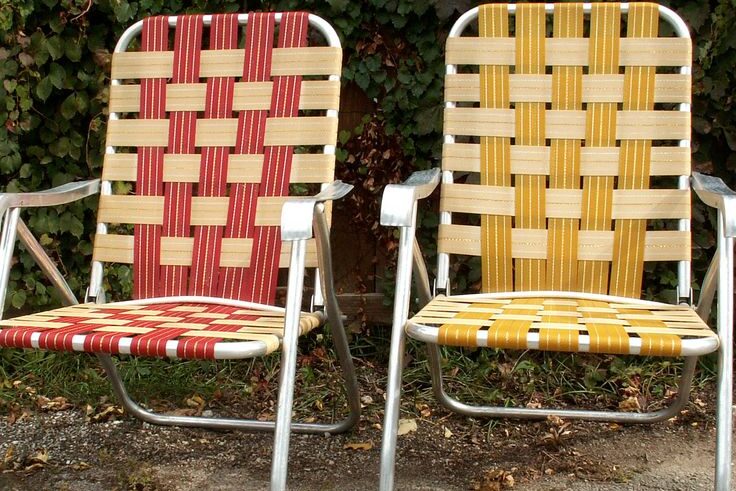
Every picnic or ball game featured aluminum folding lawn chairs crisscrossed with bright nylon webbing. They were light to carry, easy to set up, and almost guaranteed to collapse when you least expected it. Kids remember sinking suddenly through broken straps or getting pinched by loose edges that left red marks. Despite the flaws, these chairs were staples of backyard life. Their squeaky aluminum frames and woven seats remind many of cookouts, fireflies, and evenings filled with laughter. Even when the webbing gave way, people laughed it off. Lawn chairs with snapping seats were a true part of 1970s summers.
61. Rock ’Em Sock ’Em Robots Battling Until Heads Popped Off

Rock ’Em Sock ’Em Robots brought the excitement of the boxing ring into the living room. Kids took sides, one red, one blue, frantically pressing buttons to throw punches until a robot’s head popped up in defeat. The plastic clatter of fists echoed as friends and siblings battled for bragging rights. Matches ended in cheers, laughter, or sometimes real arguments when competition got heated. The game was simple yet endlessly entertaining, capturing the thrill of rivalry in colorful plastic. Rock ’Em Sock ’Em Robots made victory feel huge, even if it was only a spring-loaded head popping into the air.
62. Sea Monkeys That Weren’t Really Monkeys

The ads promised magical underwater pets with smiling faces and tiny crowns, but what kids got were brine shrimp swimming in little tanks. Despite the truth, imaginations filled in the gaps, and children stared for hours at the specks drifting in the water. Feeding them, watching them grow, and waiting for something more felt like a mix of science and hope. Parents may have rolled their eyes, but kids treasured the mystery. Sea Monkeys were both disappointment and wonder, a reminder that childhood dreams could be fragile yet still magical. They remain one of the strangest fads of the 1970s.
63. Stretch Armstrong That Snapped at the Seams
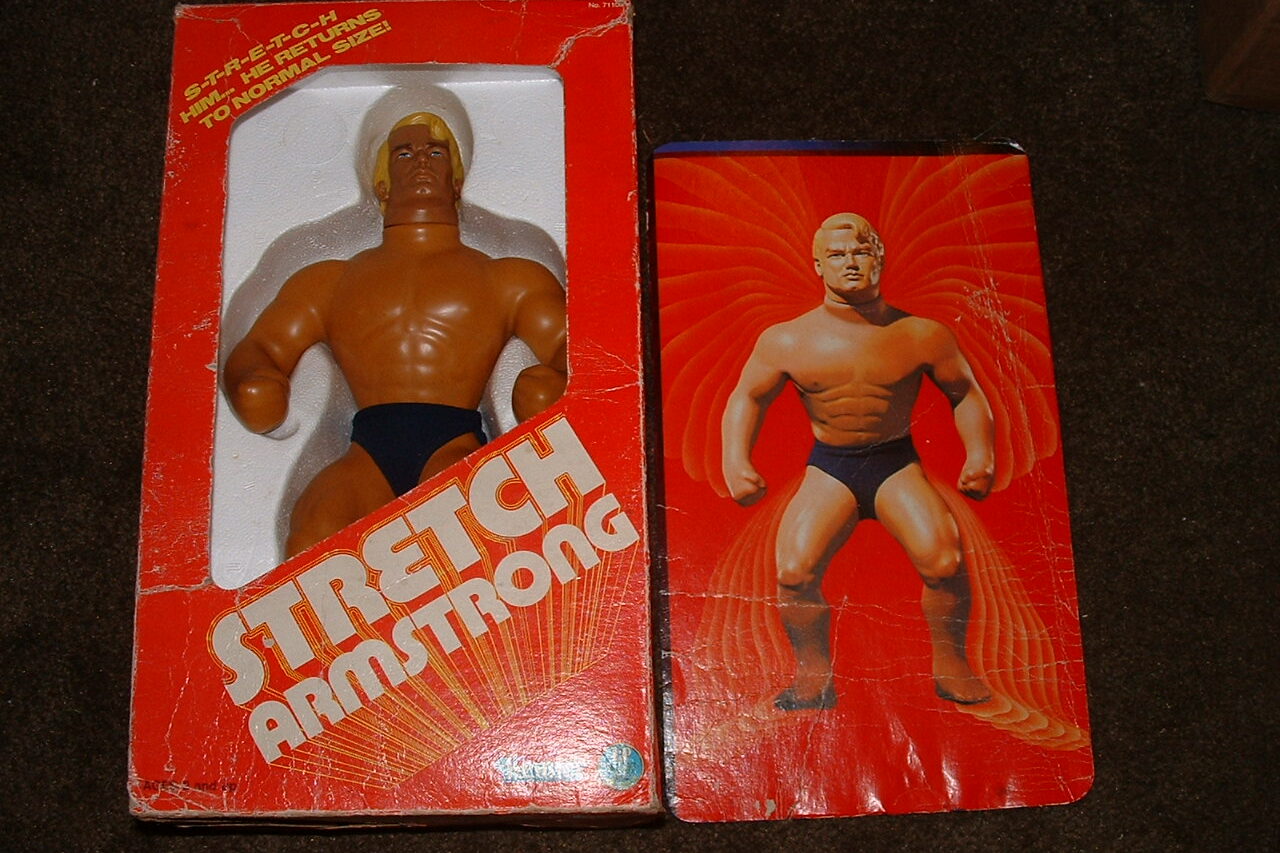
Stretch Armstrong was more than an action figure; he was a test of limits. Kids pulled his rubbery arms as far as they could, twisted him into knots, and marveled when he snapped back into shape. Eventually, though, too much stretching made him split, oozing sticky goo that looked like corn syrup. Friends competed to see who could stretch him farthest, and laughter filled the air when he finally gave out. Despite the mess, Stretch Armstrong became a toy legend. He taught kids that pushing boundaries could be fun, unpredictable, and just a little bit disastrous. His memory stretches on.
64. The Smell of Freshly Opened Mad Magazines

Mad Magazine was a mix of irreverence and rebellion, everything parents wished kids ignored but children devoured. With Alfred E. Neuman’s grin staring from the cover, each issue brought parodies of television, politics, and pop culture. Kids traded copies, read them under blankets, and laughed at jokes they barely understood. The fold-in at the back became a ritual, revealing hidden images with a simple crease. Mad Magazine gave kids permission to laugh at authority and to see the world with sharper eyes. Its humor left a lasting mark, turning simple afternoons into moments of rebellious discovery and endless chuckles.
65. Dangerous Playgrounds of Metal and Concrete
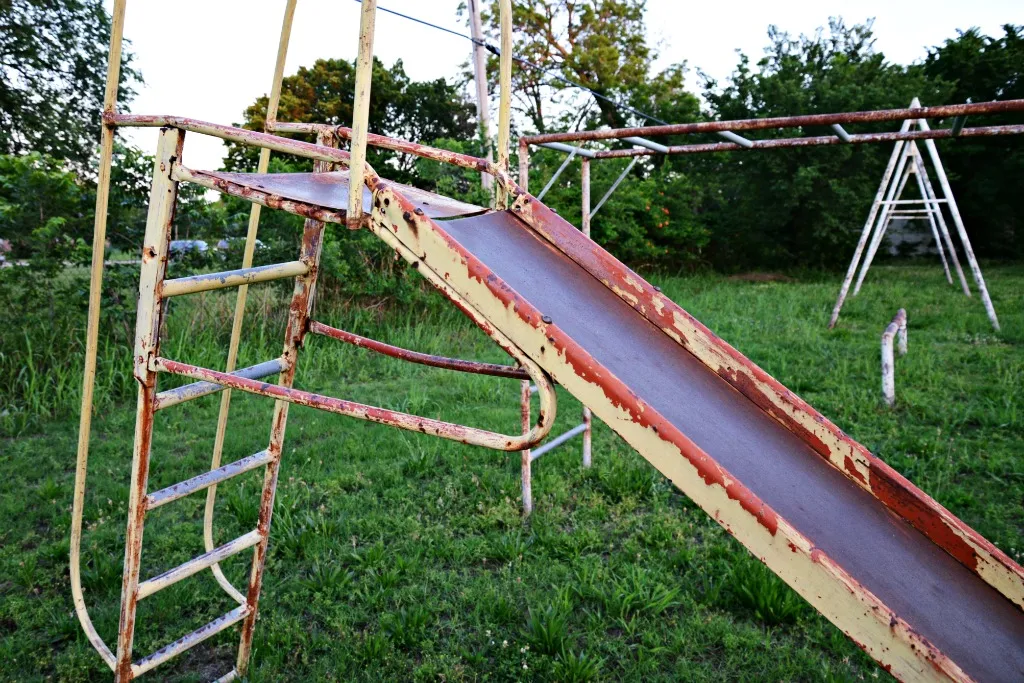
Playgrounds in the 1970s looked fearless and a little unforgiving. Slides were metal and scorching, monkey bars were high, and seesaws could slam you upward before you found your balance. Beneath everything sat concrete or asphalt that guaranteed scrapes and bruises. Yet kids lined up anyway, daring each other to climb higher, swing longer, and race down giant slides. Parents called it toughening up, and kids just called it fun. Those risky playgrounds taught balance, courage, and resilience, turning ordinary afternoons into adventures that still echo in memory. We learned caution, then climbed again, chasing courage with grass stained knees.
66. The First McDonald’s Happy Meals
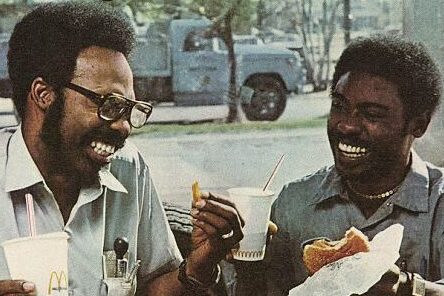
Sometimes a small box could light up an entire afternoon, and the first Happy Meals proved it. Kids unwrapped burgers or nuggets, fries, and a drink, but the best part waited inside the colorful box. A surprise toy turned dinner into an event, a tiny treasure to trade or collect with friends. Families found reasons to stop by again, and kids begged for another chance at the newest prize. Fast food suddenly felt like a party, a mini celebration tucked beside ketchup and napkins. That first Happy Meal still glows in memory, bright and joyful. That little surprise changed dinner.
67. Tangled Cassette Tapes and Pencils That Saved Them

Cassettes gave kids real control over music, but they tangled at the worst moments. Tape spilled from decks like ribbon when a favorite song was almost finished. The fix lived in every pencil case, slide a pencil into the reel and twist patiently until the loops tightened again. Mixtapes returned to life, radio recordings survived another day, and friendships were sealed with traded tapes. The hiss, the click, and that soft clunk before play began are sounds people still hear in memory. Cassettes were fragile and stubborn, yet they made music feel personal, portable, and proudly homemade for many listeners.
68. Shrink-Wrapped Comics at the Drugstore
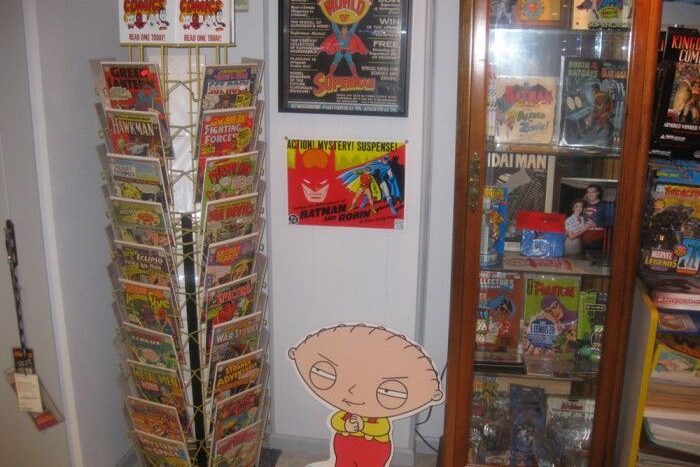
Drugstore spinner racks turned errands into treasure hunts. Shrink wrapped comics shouted from colorful covers, promising battles, cliffhangers, and heroes who saved the day. Kids thumbed through issues, picked favorites, and begged for spare change to bring one home. Sometimes two came in a pack, a mystery pairing that made choices harder. Comics were read on porches, shared at school, and passed down until spines cracked. The smell of ink and newsprint settled into memory alongside secret identities and origin stories. Those racks made ordinary corners magical, places where a quarter could unlock a universe drawn in bright panels everywhere.
69. Gum Ball Machines and Sticky Fingers
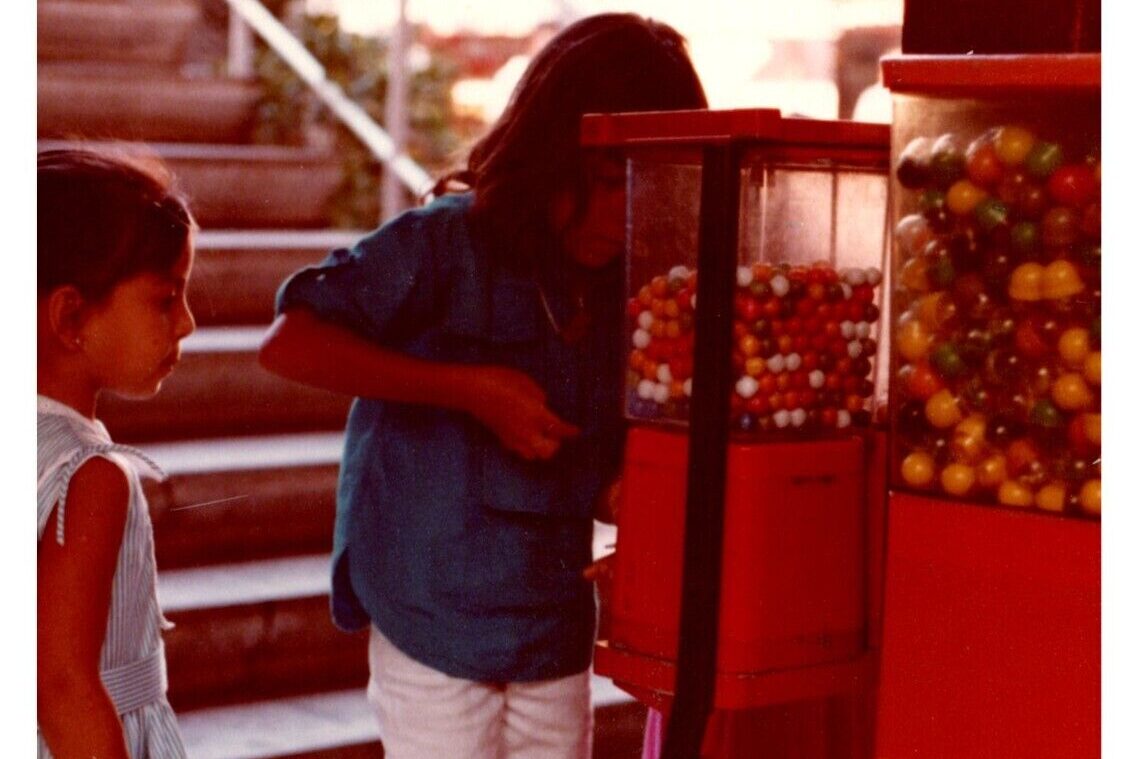
Gumball machines turned spare change into tiny celebrations. Kids twisted metal knobs, waited for the rattle, and caught bright candies in cupped hands. The first bite was hard, then sweet, and tongues turned wild colors that lasted through errands. Sometimes the machine jammed or delivered two, a jackpot that sparked huge grins. Standing on tiptoes to peer into the globe became part of the ritual. Bowling alleys, grocery stores, and malls all kept them near the door. Those little globes made patience rewarding, proving that a coin, a turn, and a click could create a simple burst of happiness everywhere.
The 1970s left behind more than just pop culture headlines, it shaped everyday experiences that live on in the memories of those who grew up then. Looking back, it’s not just about the fads or the fashions, it’s about the way those moments brought people together, sparked joy, and created stories that are still shared today.
This story 69 Things Only Kids Who Grew Up in the 1970s Will Never Forget was first published on Daily FETCH


